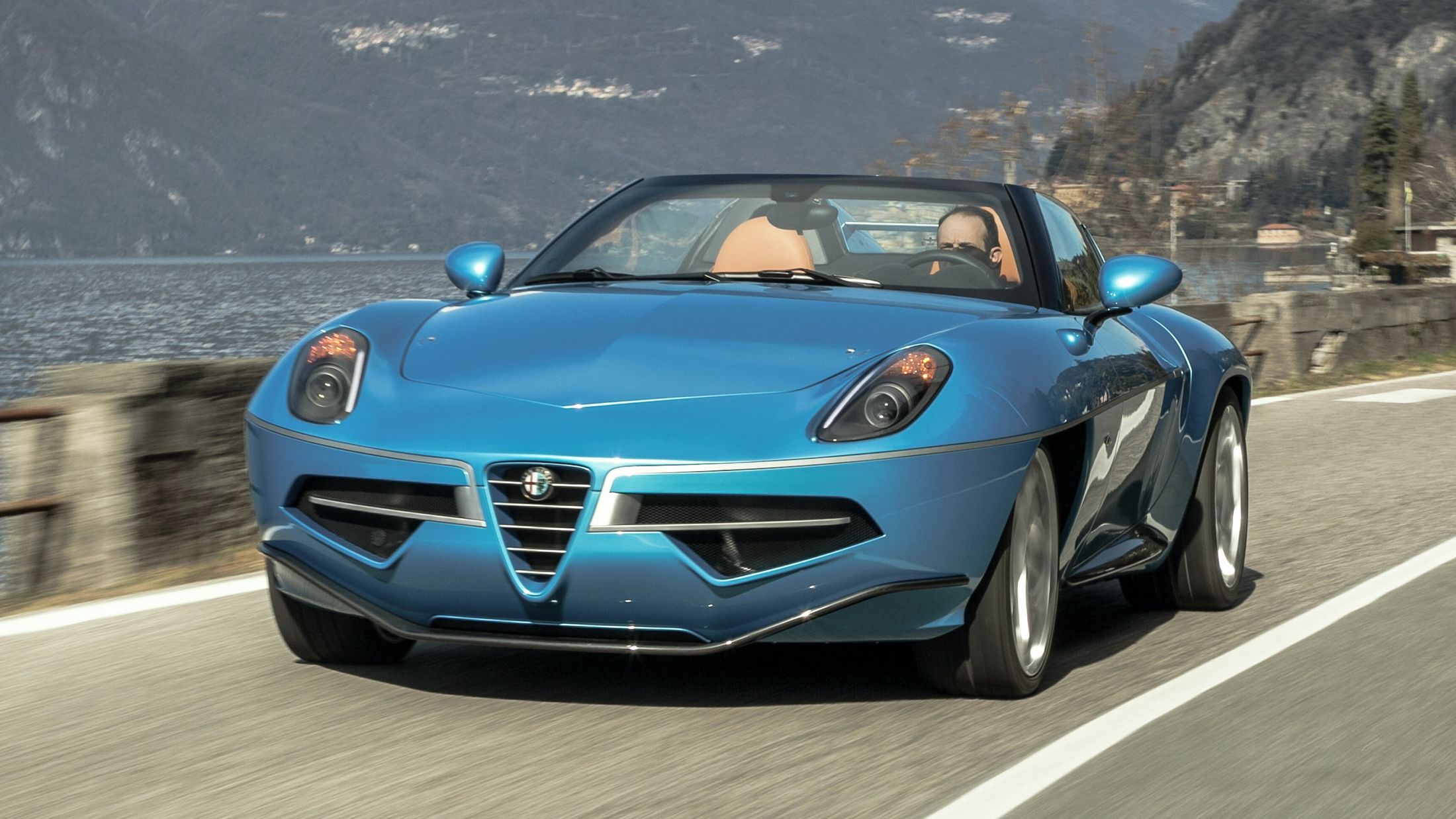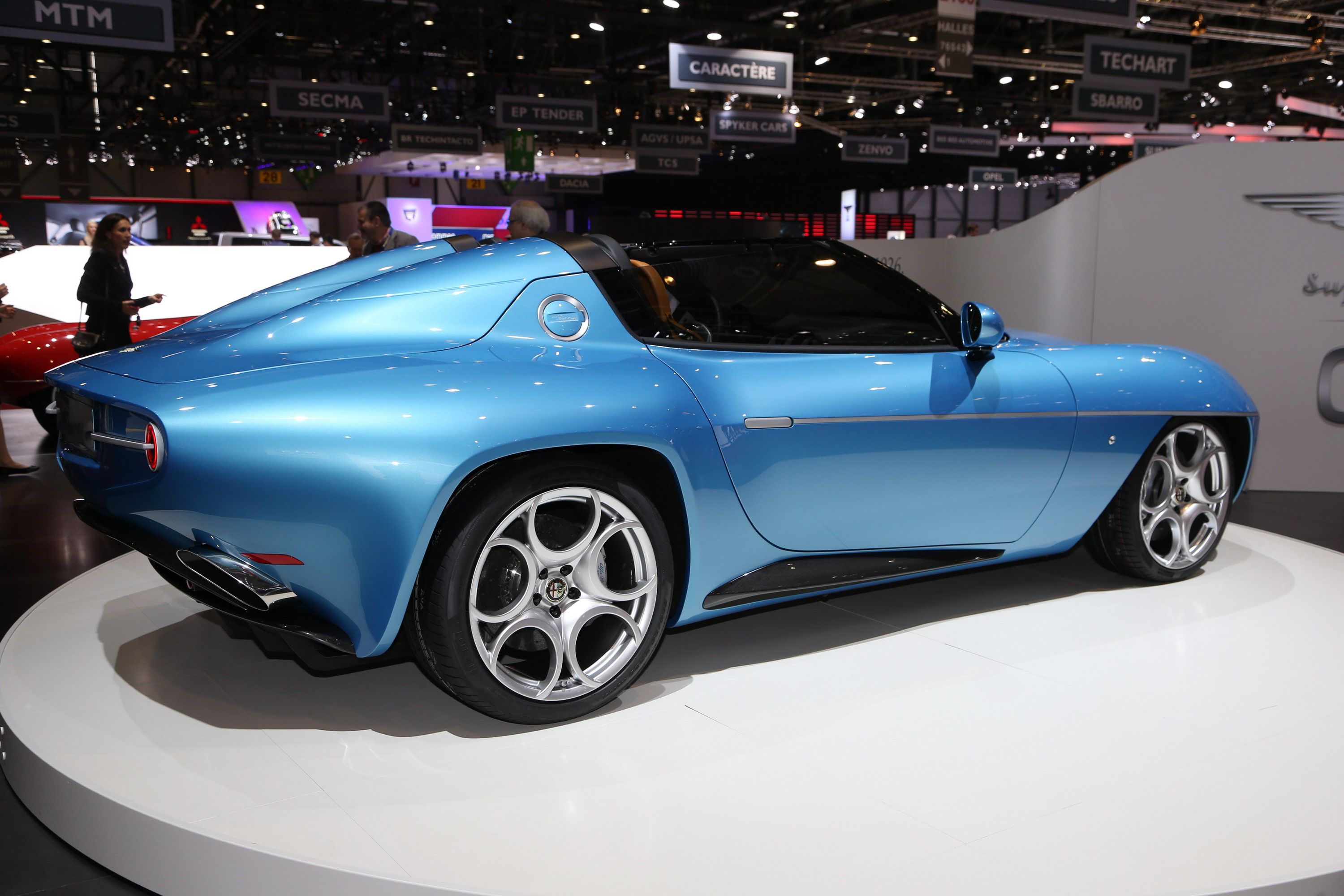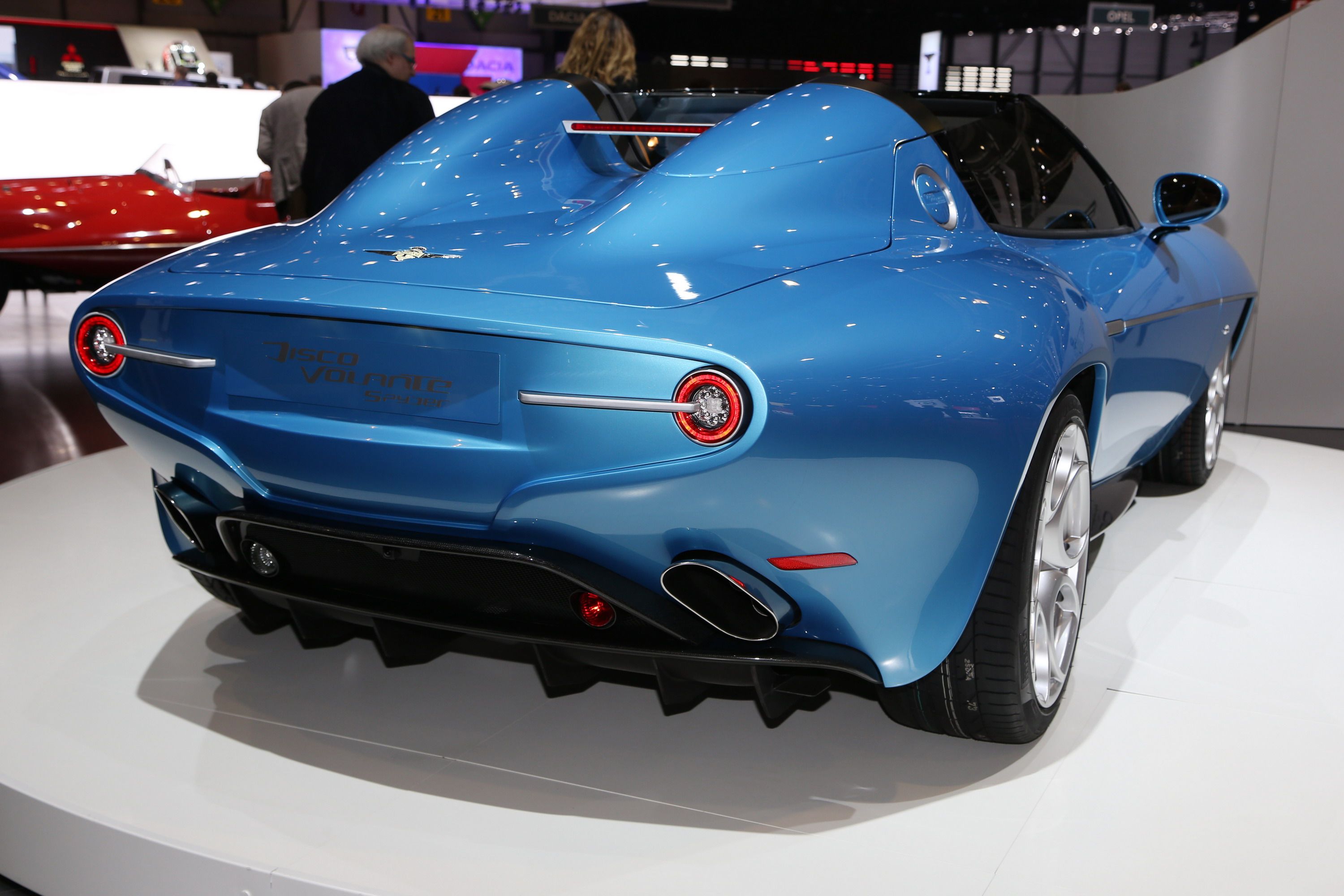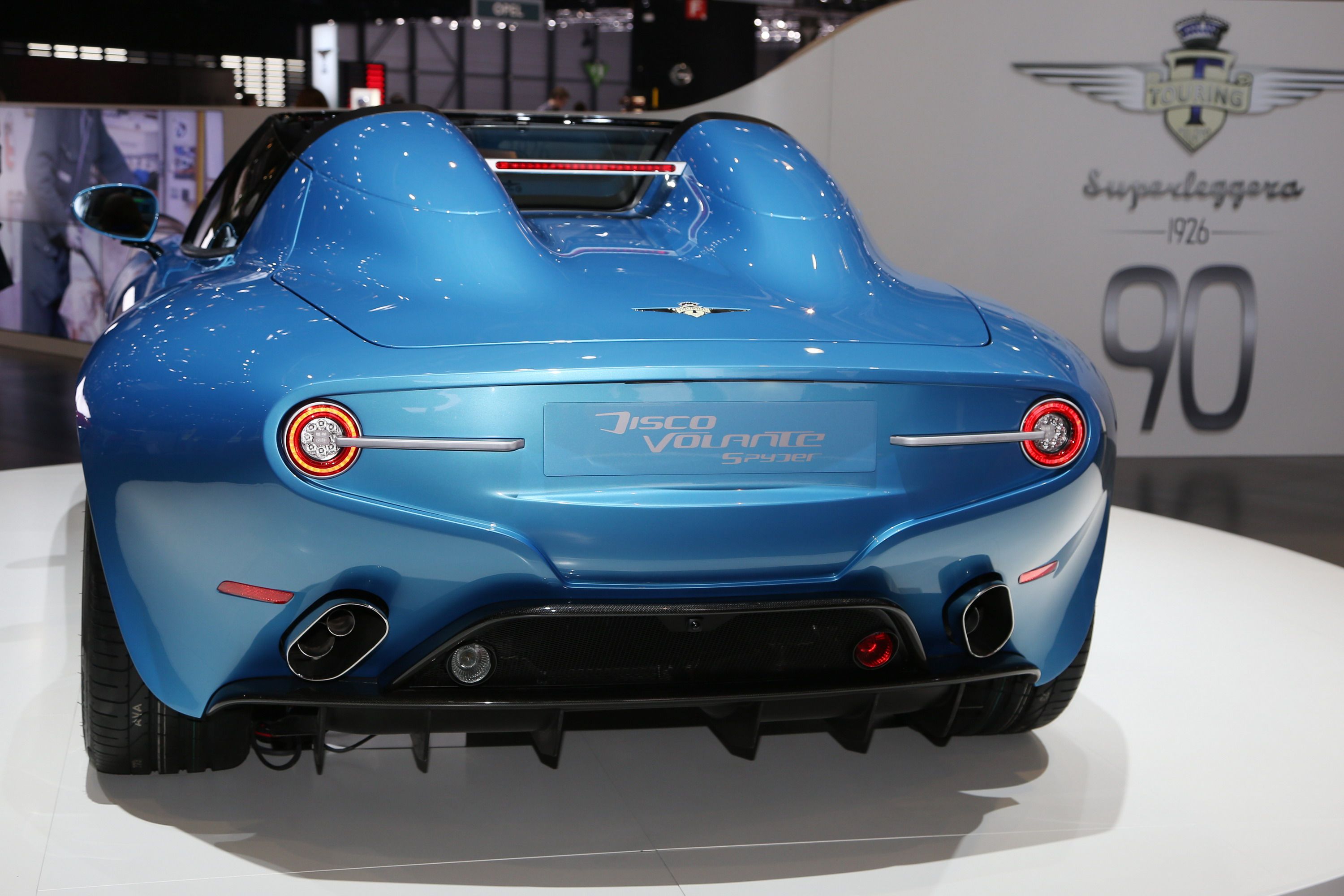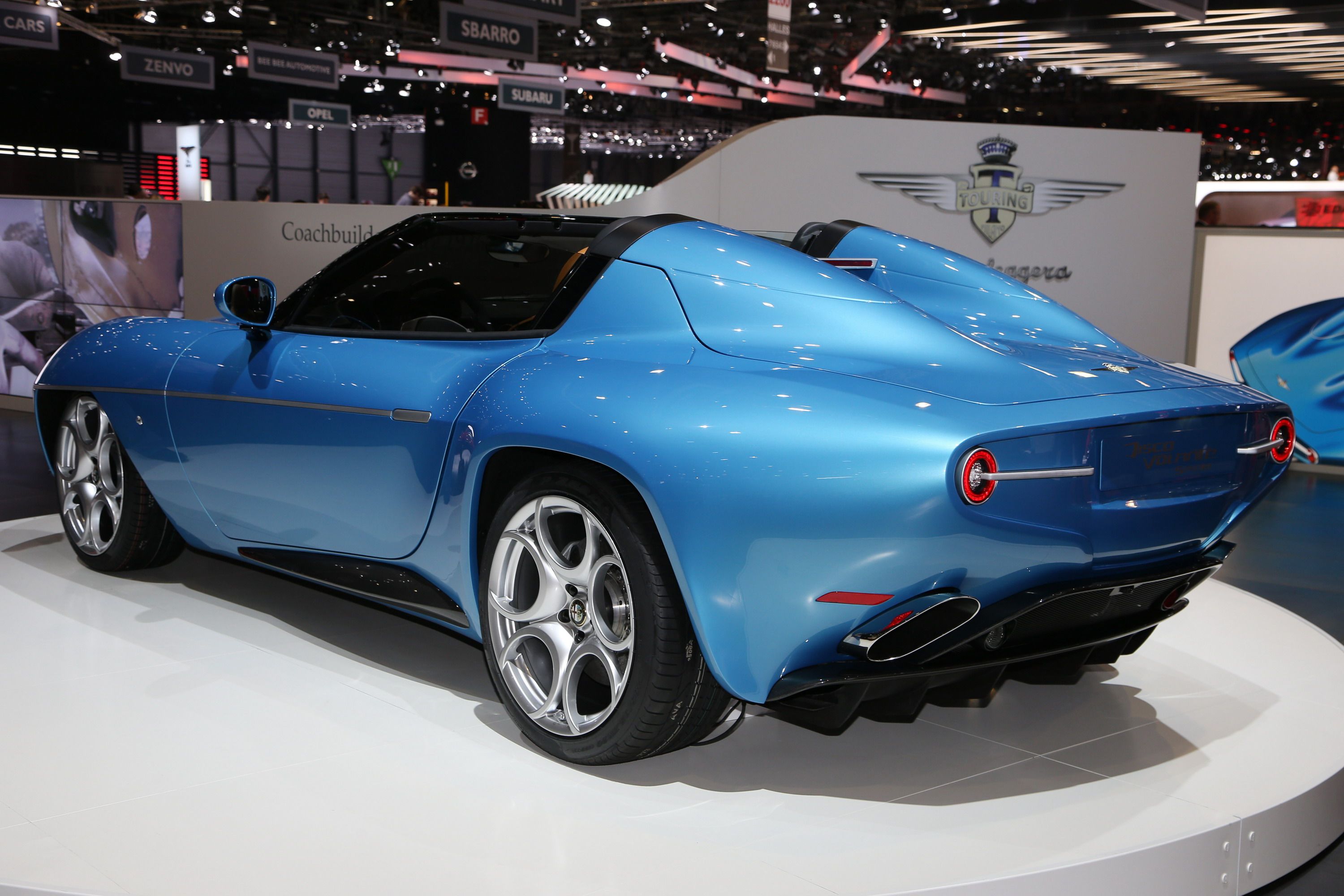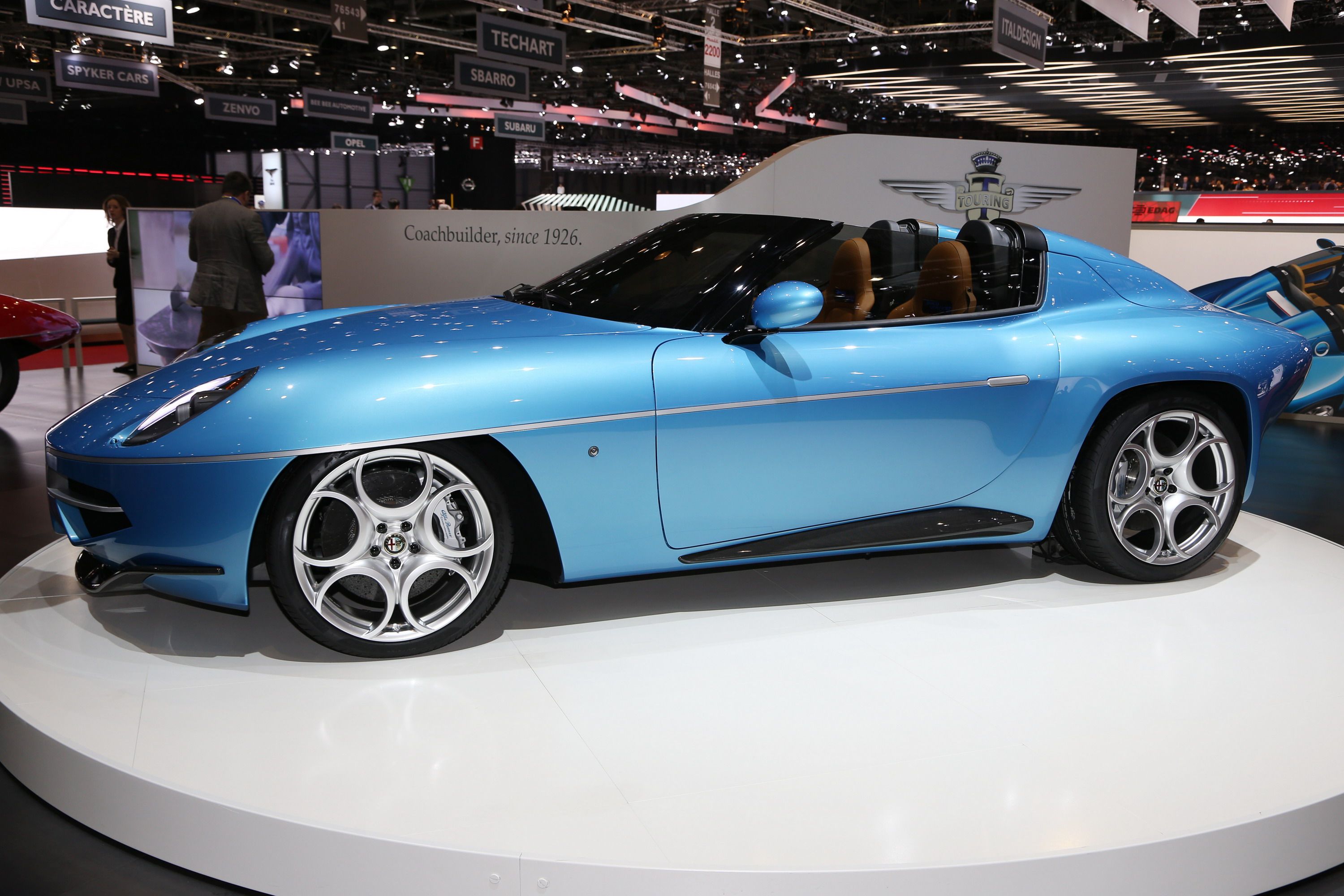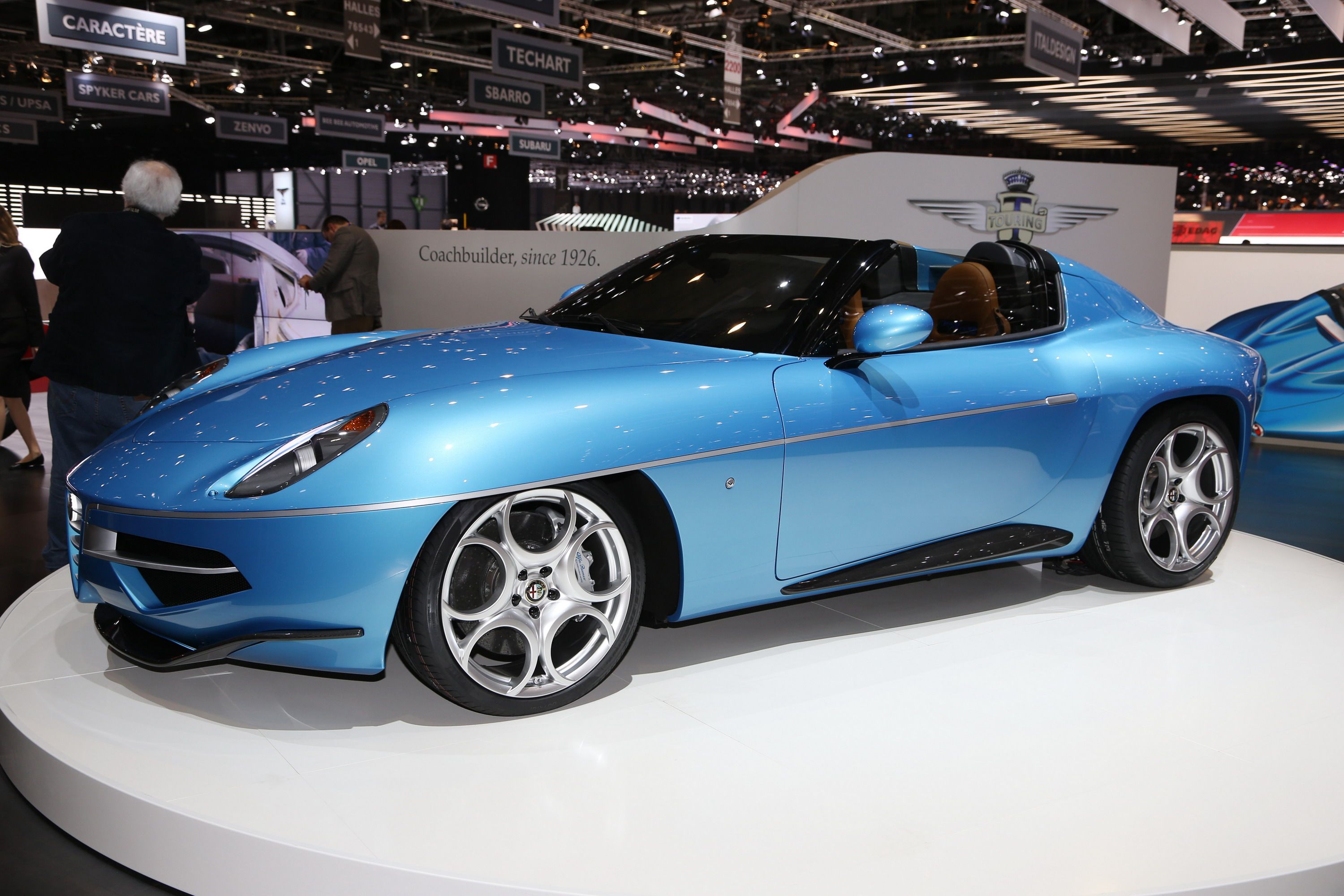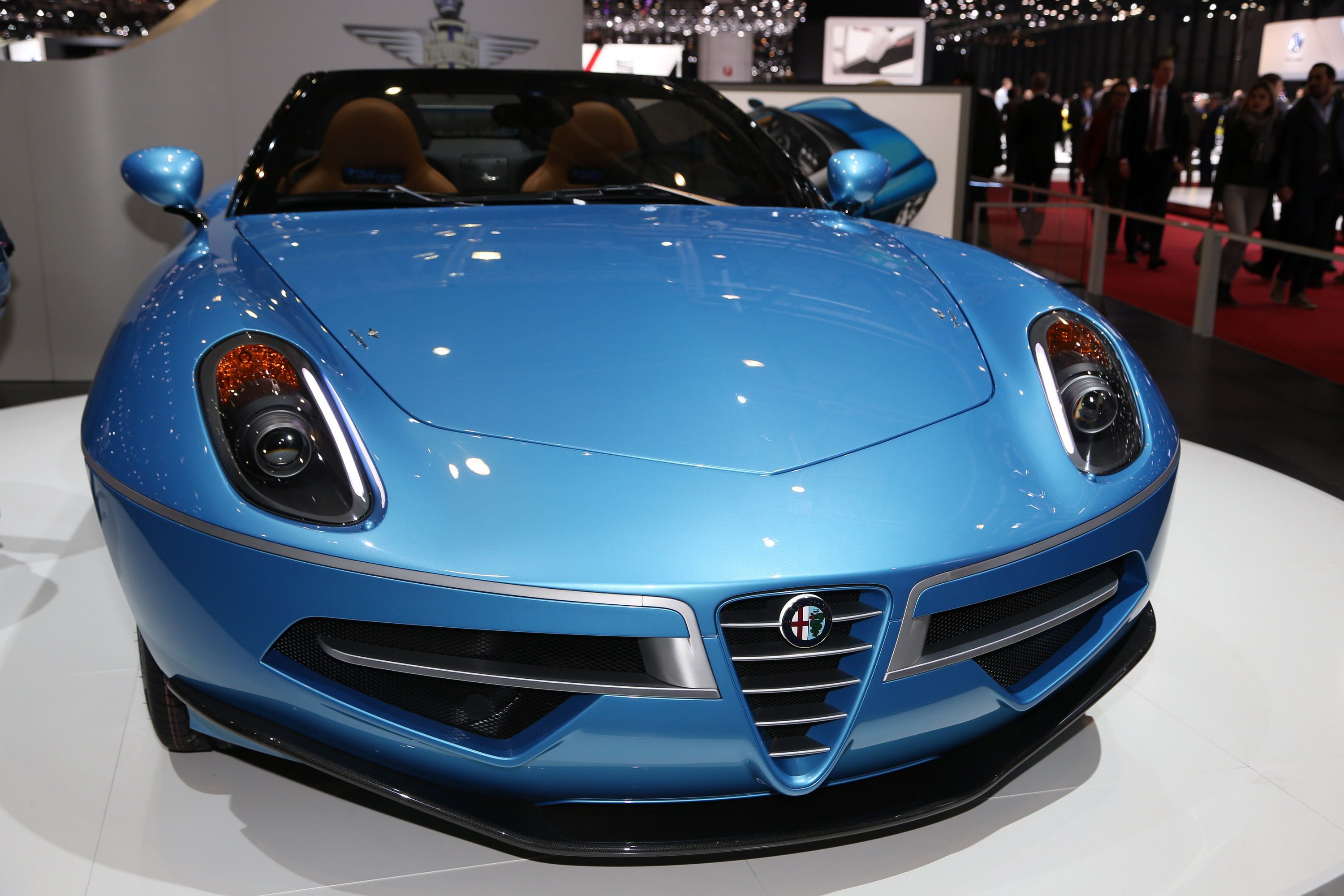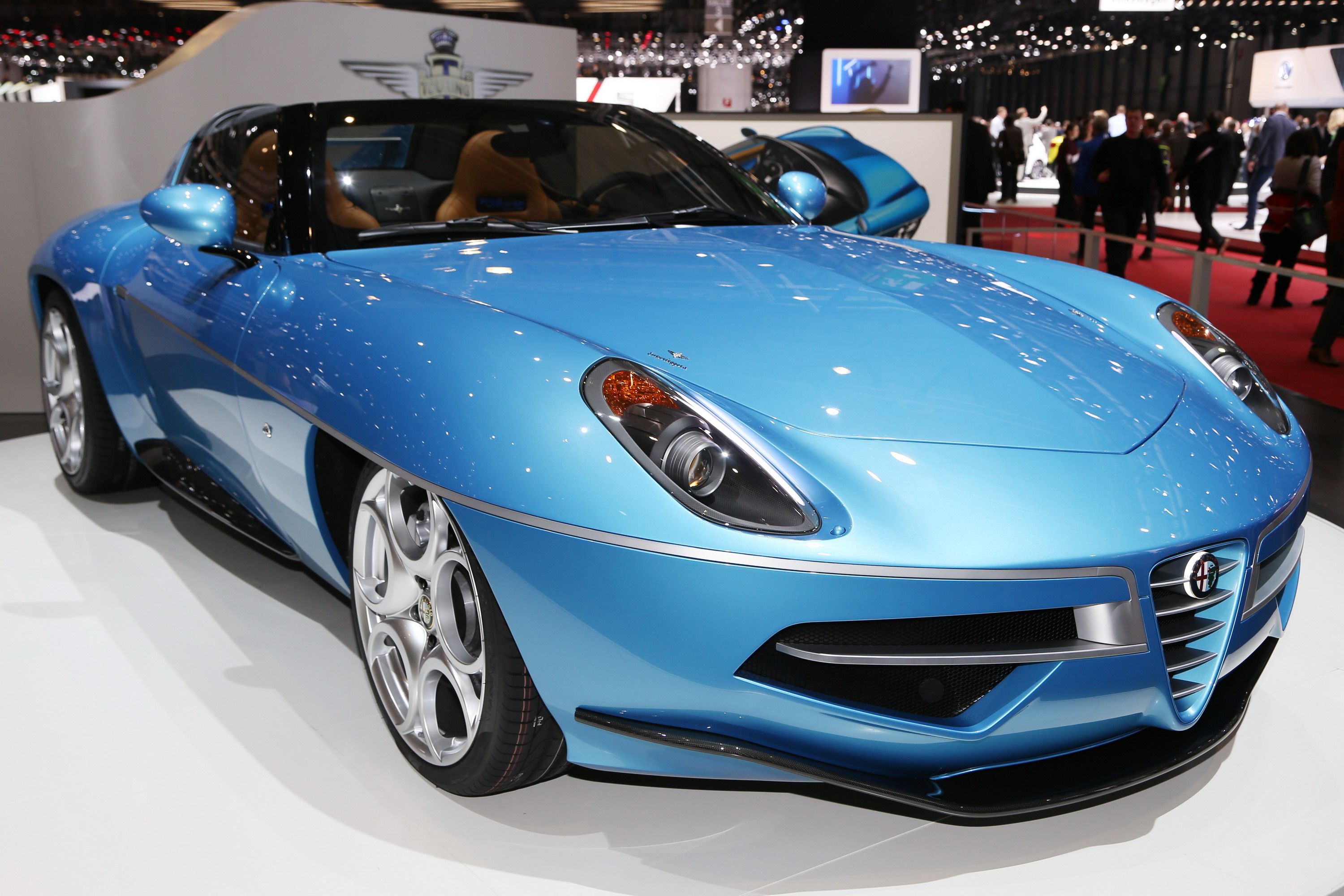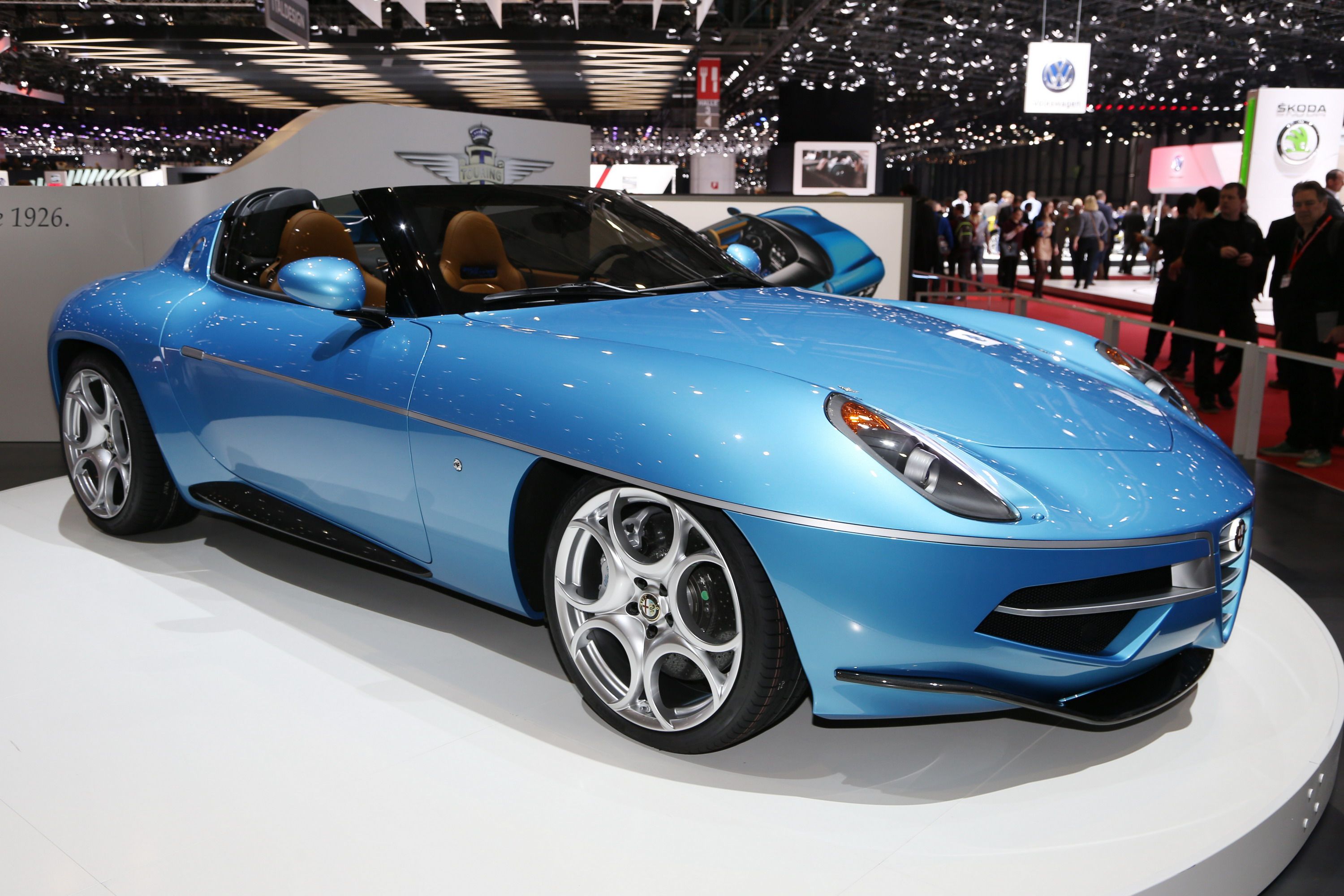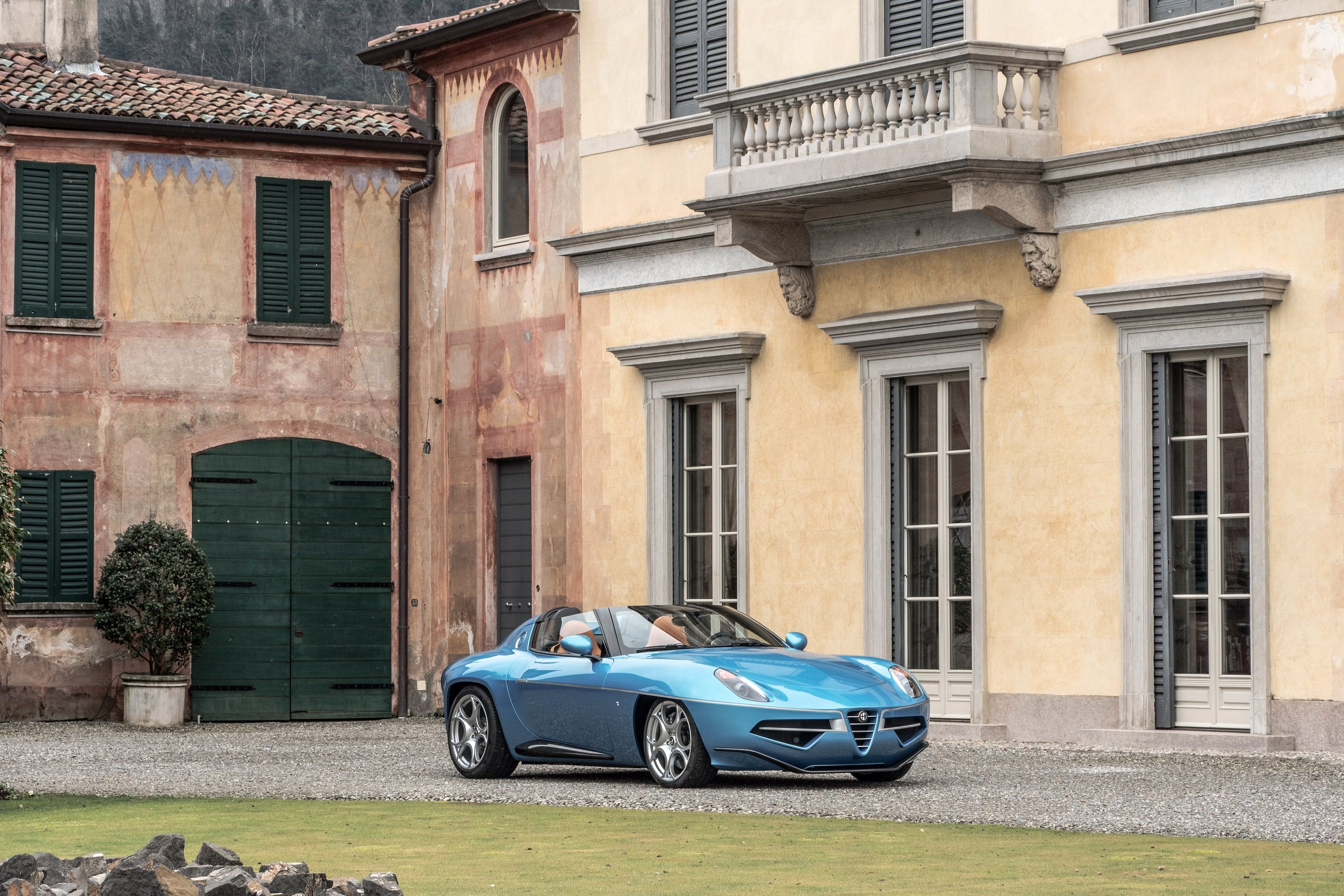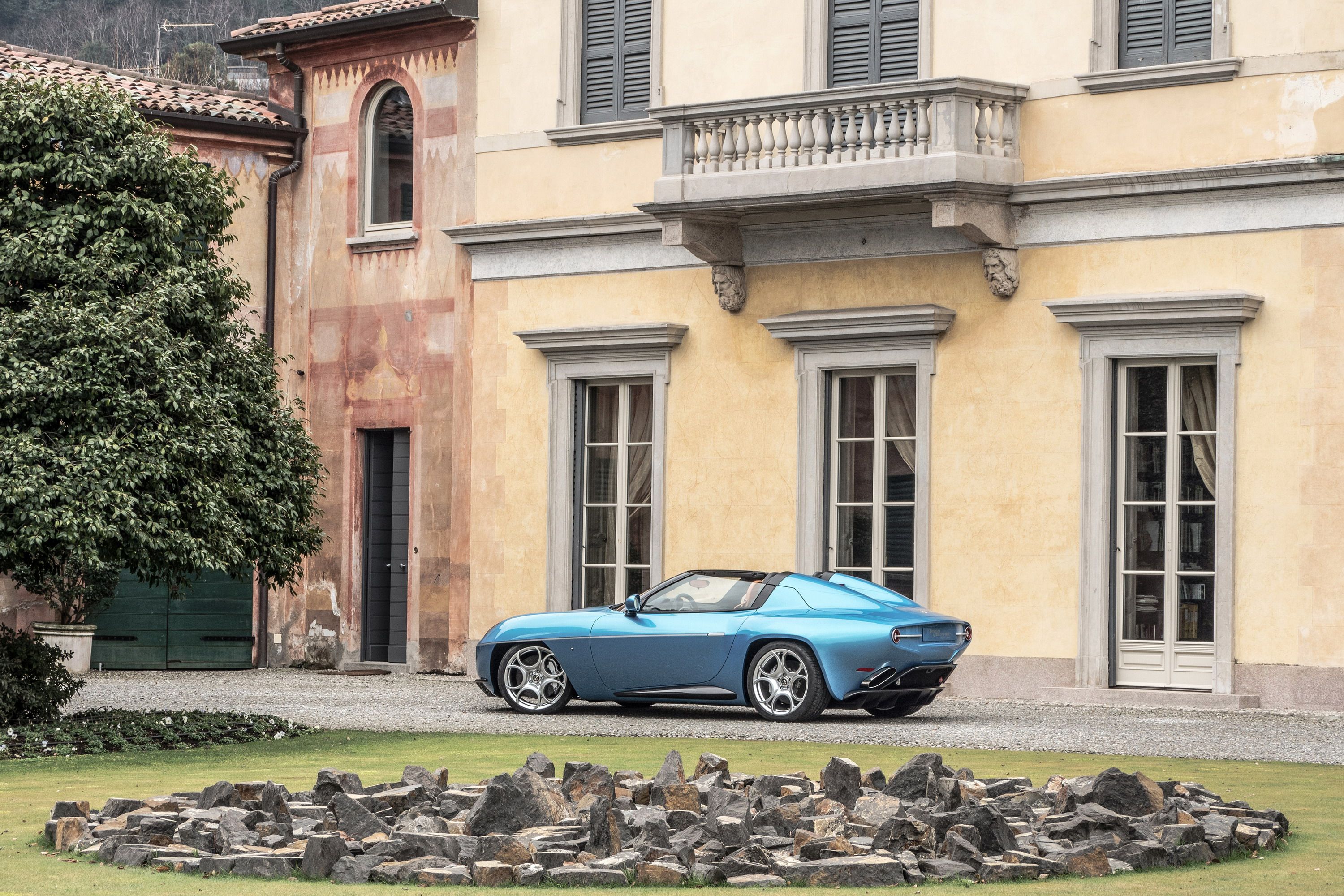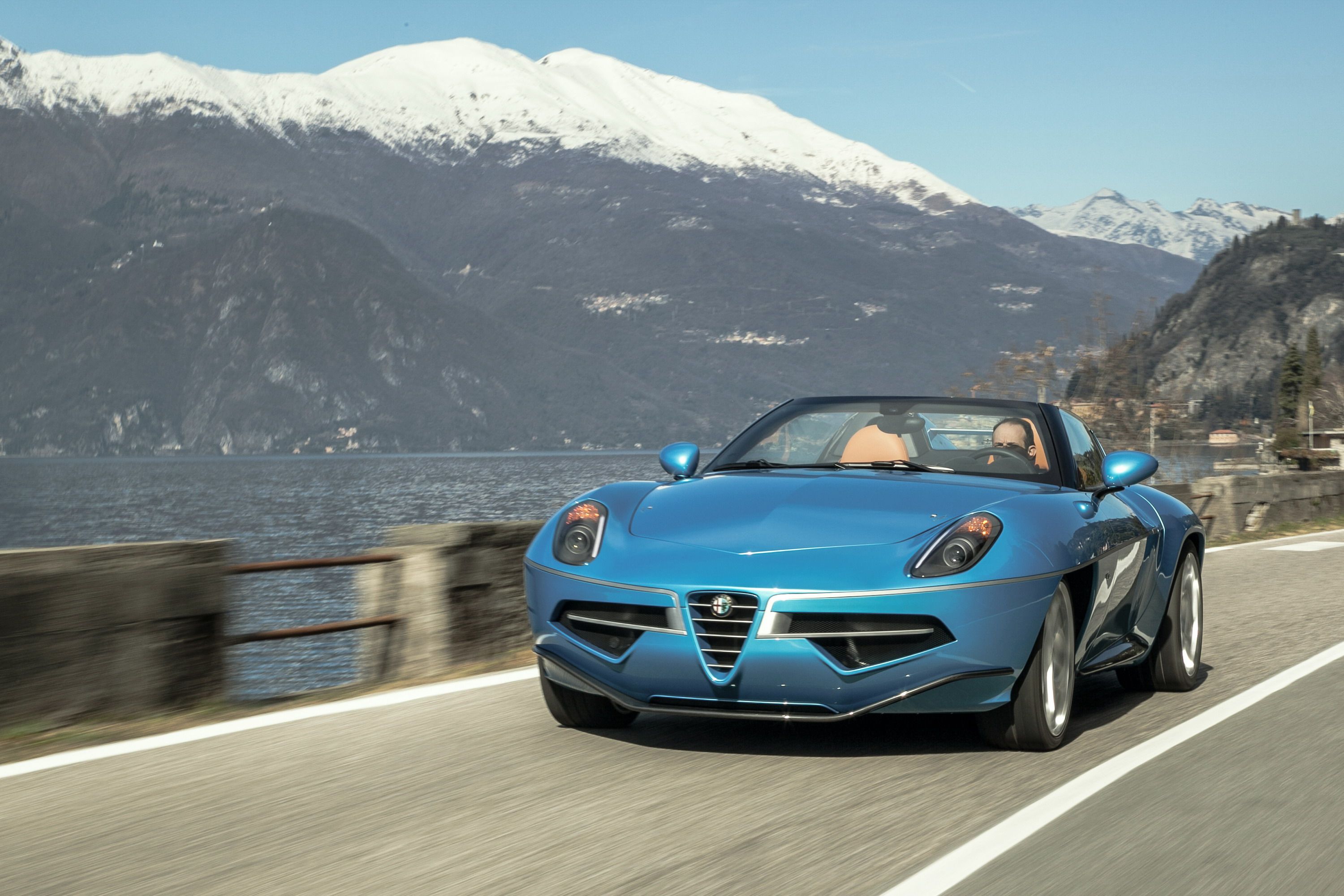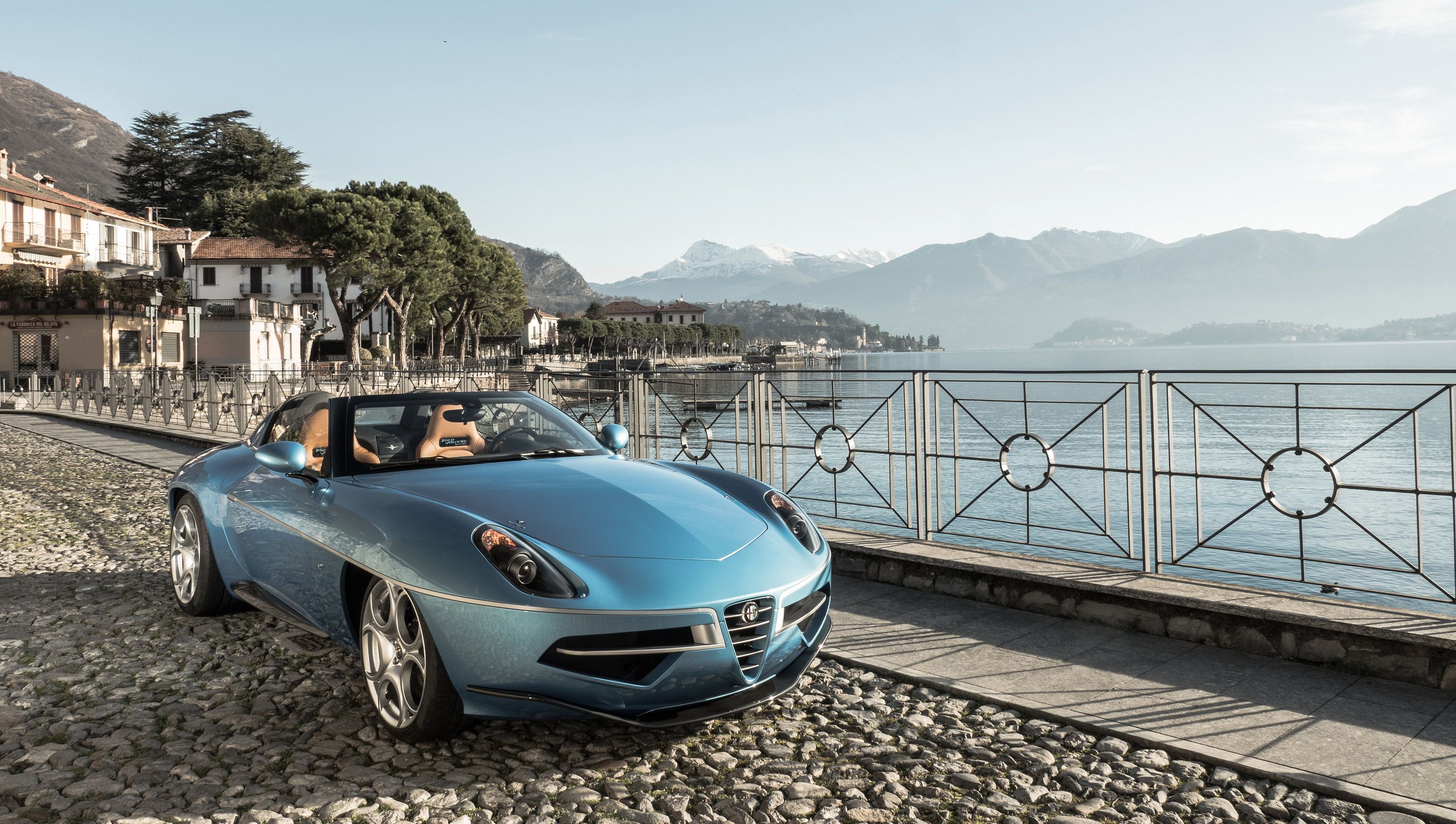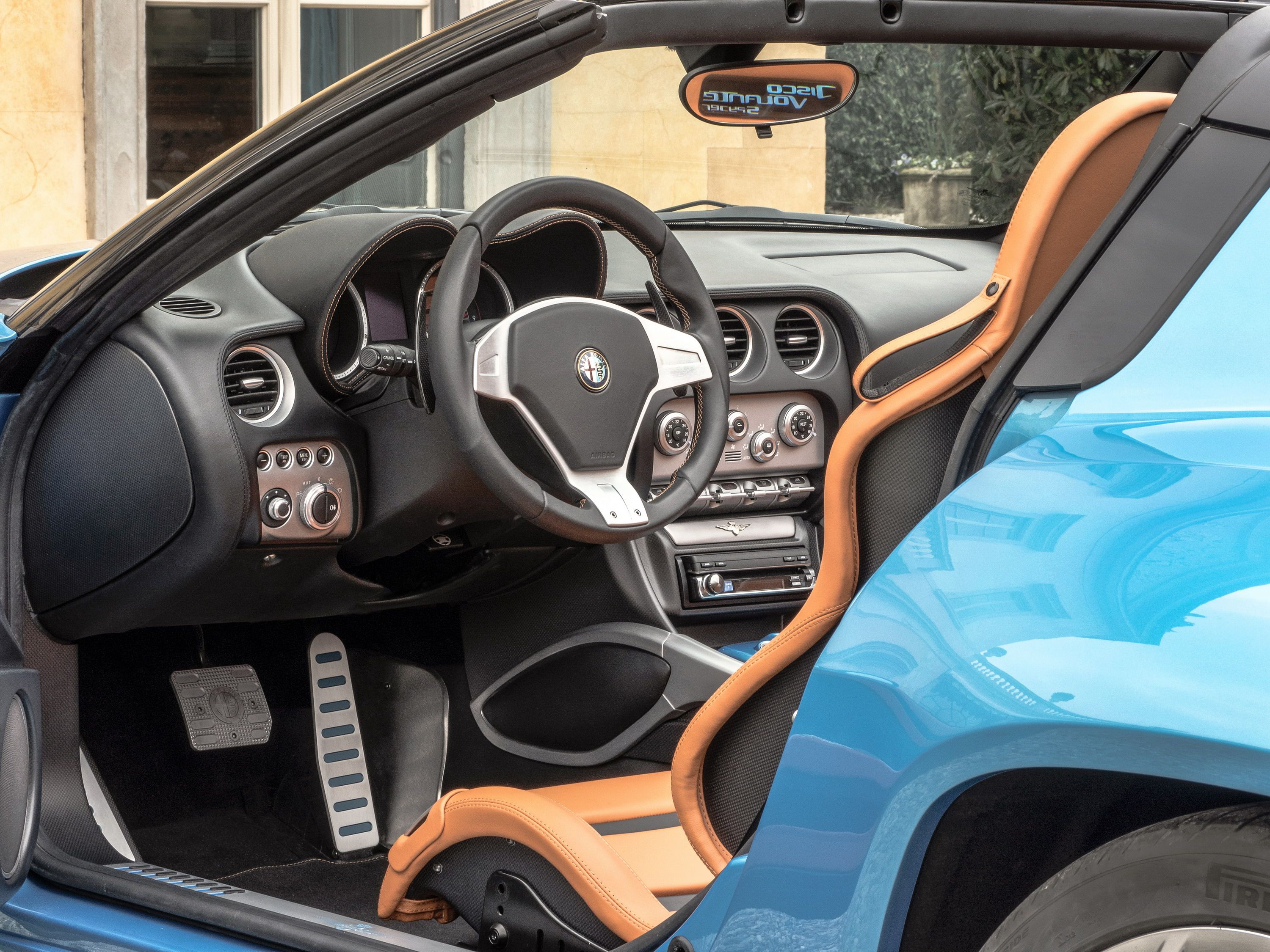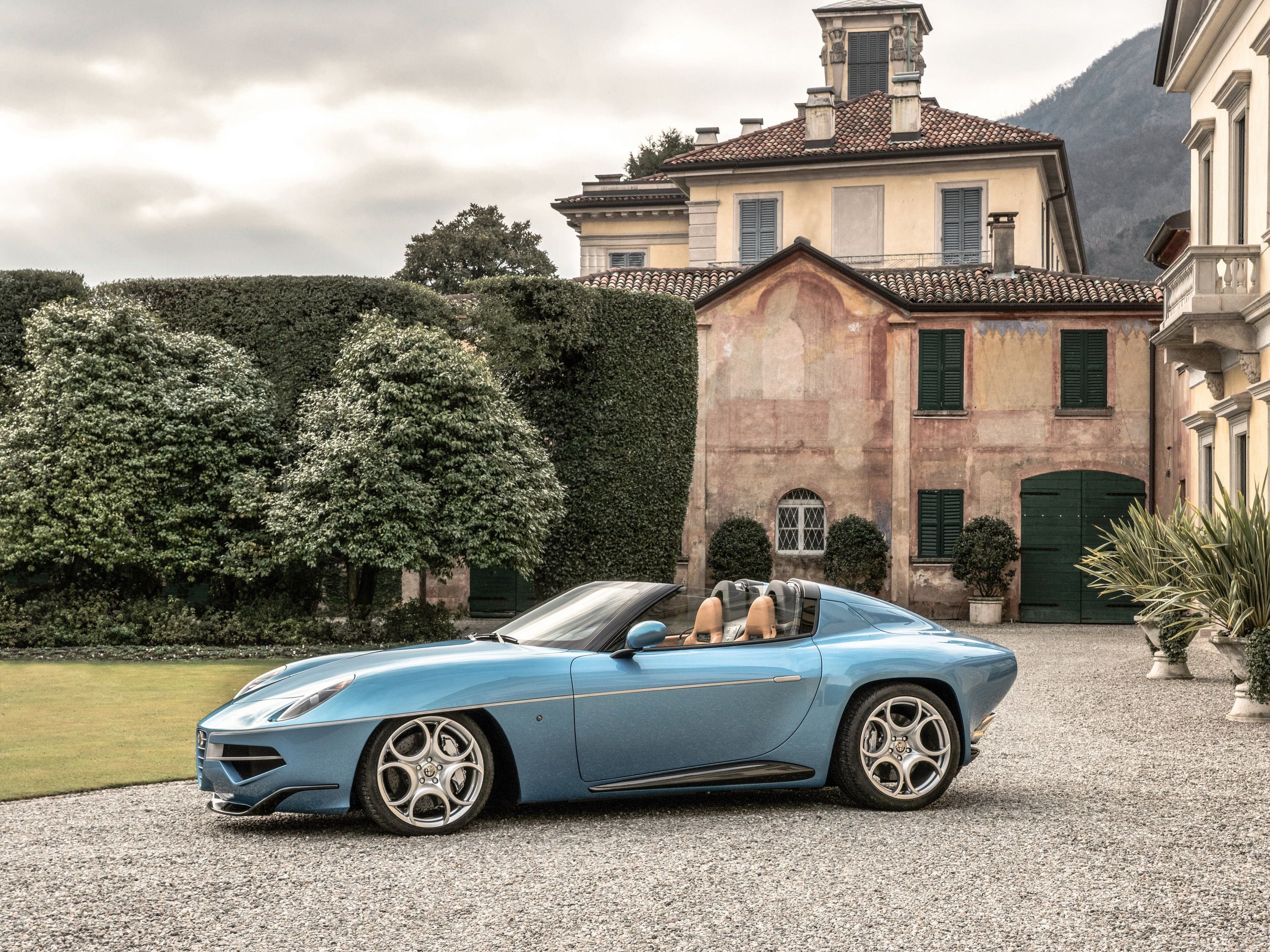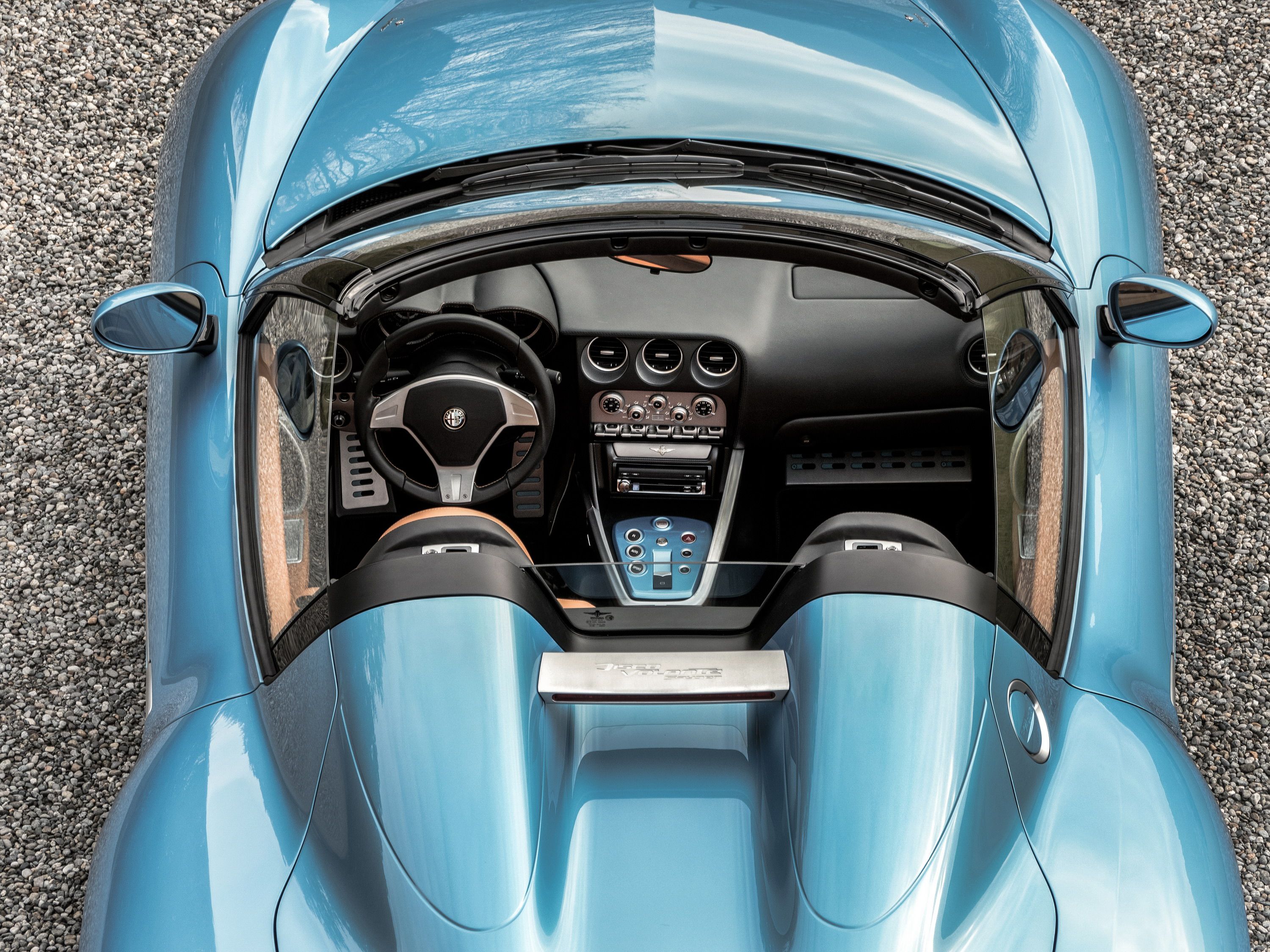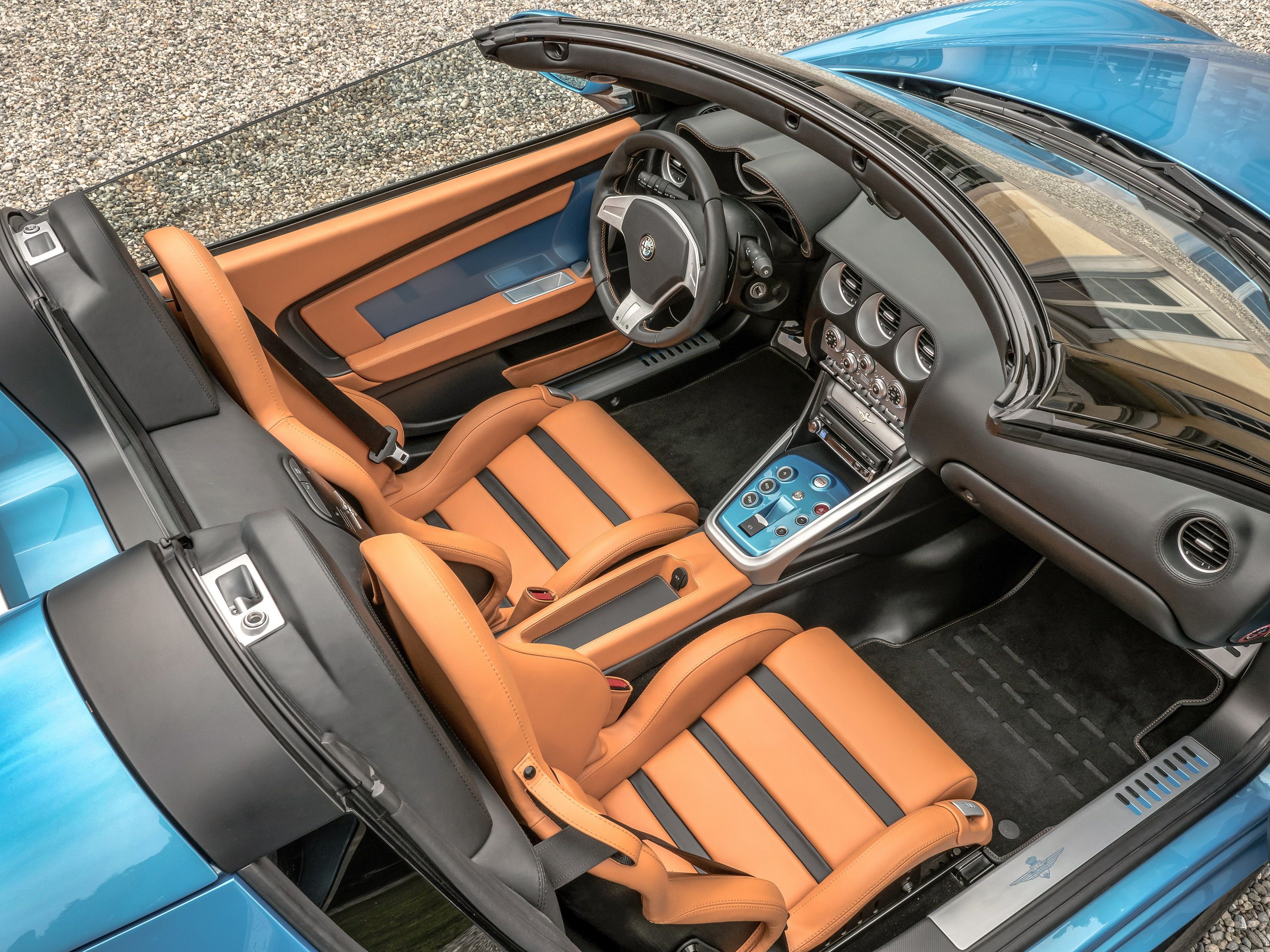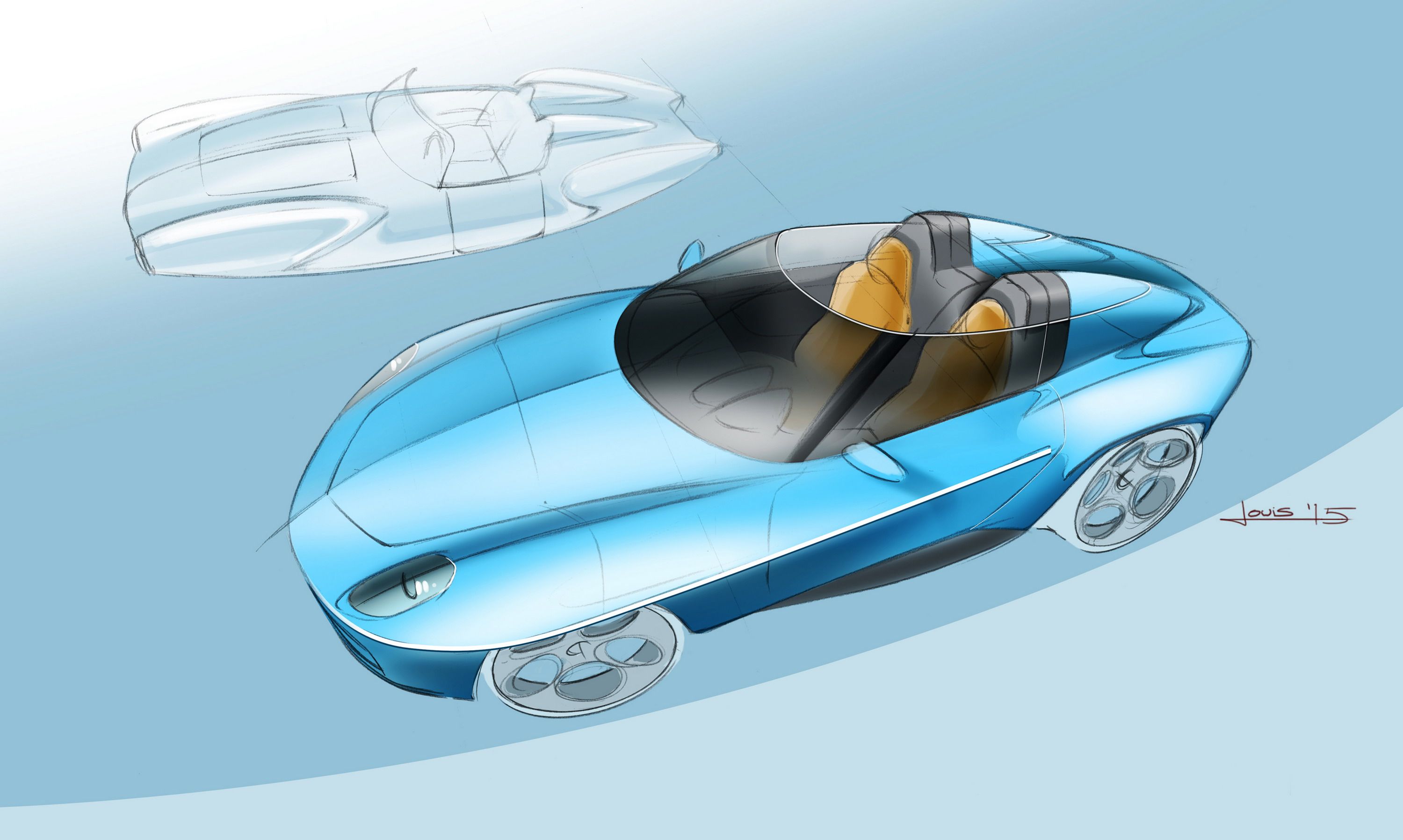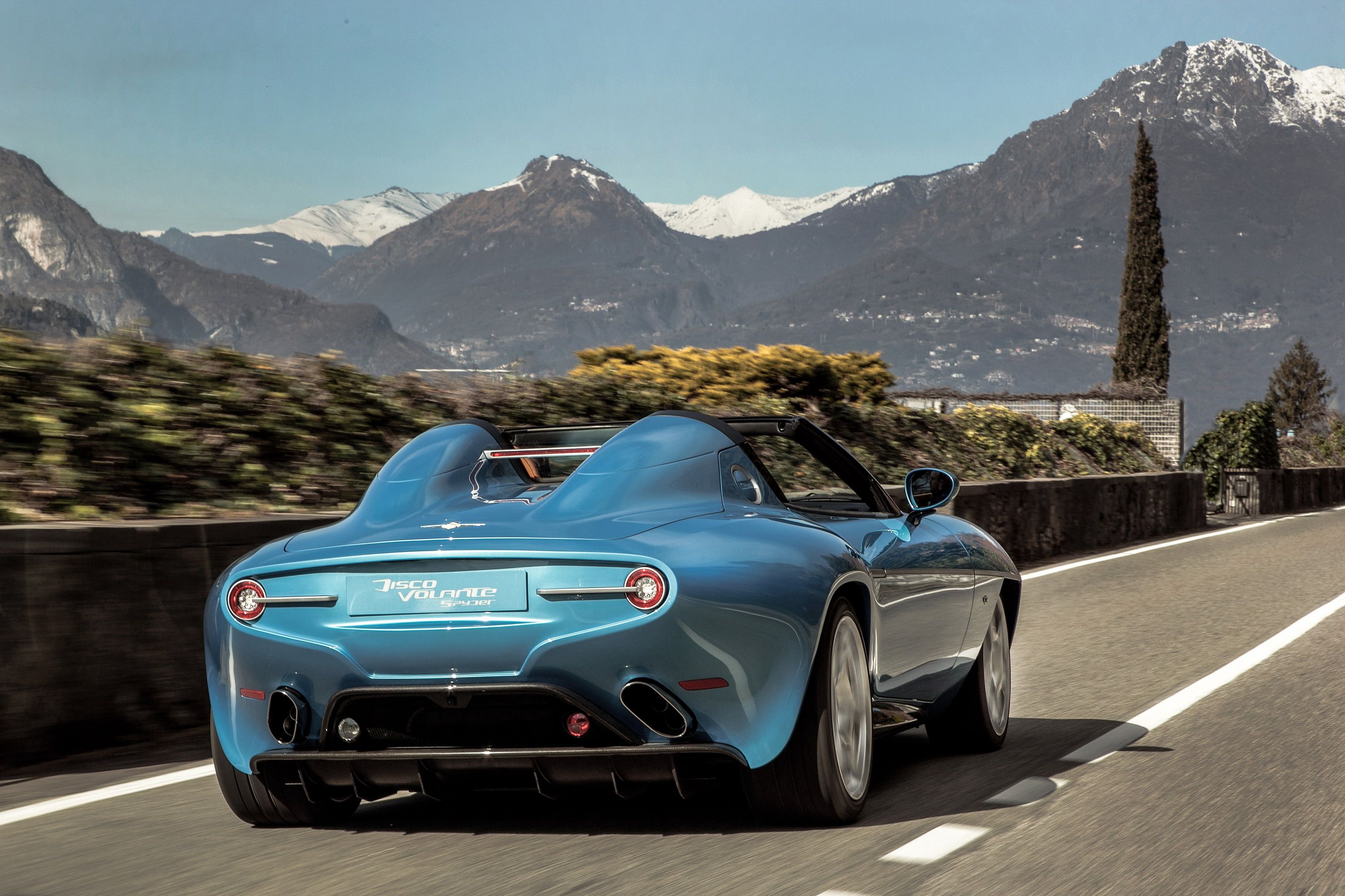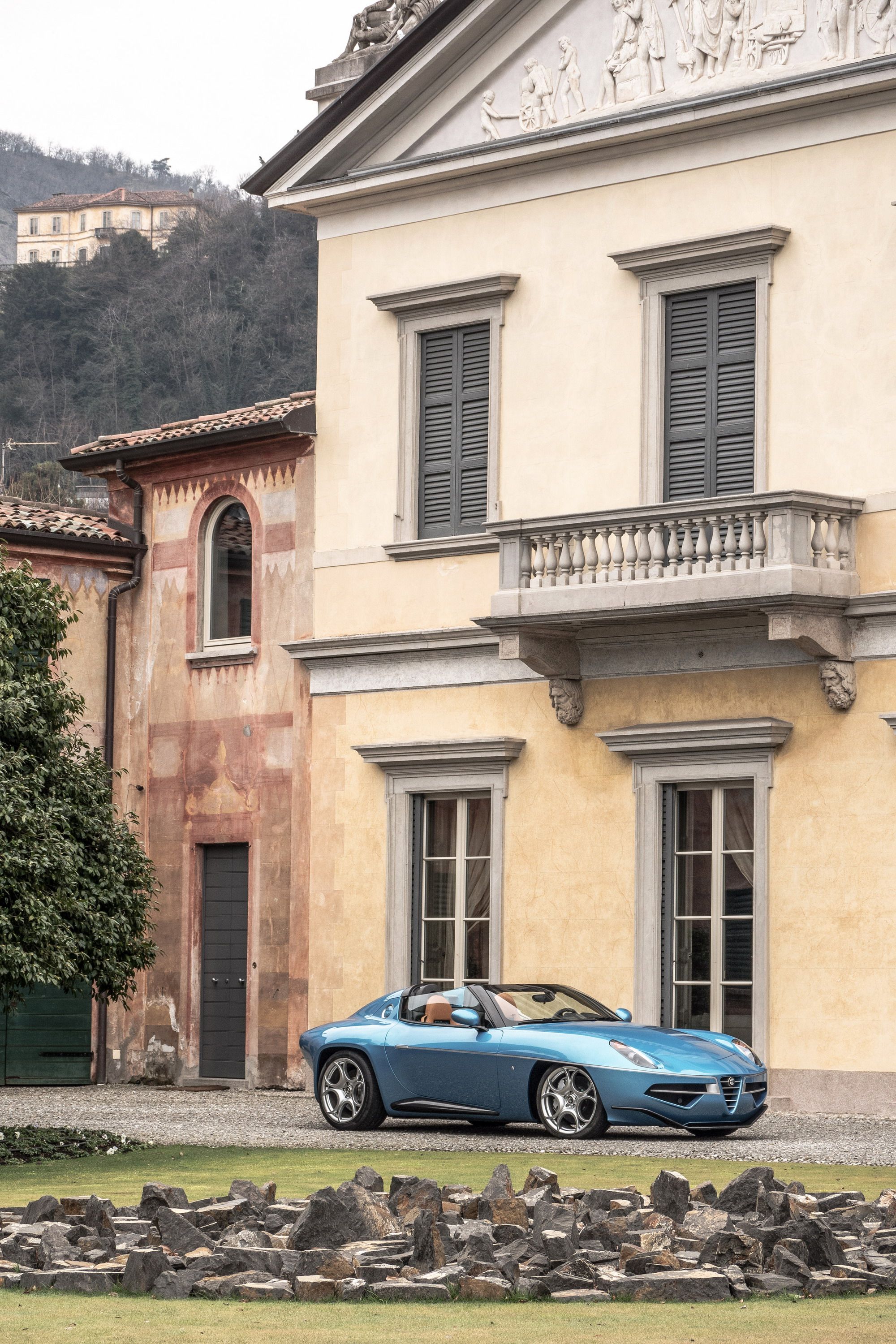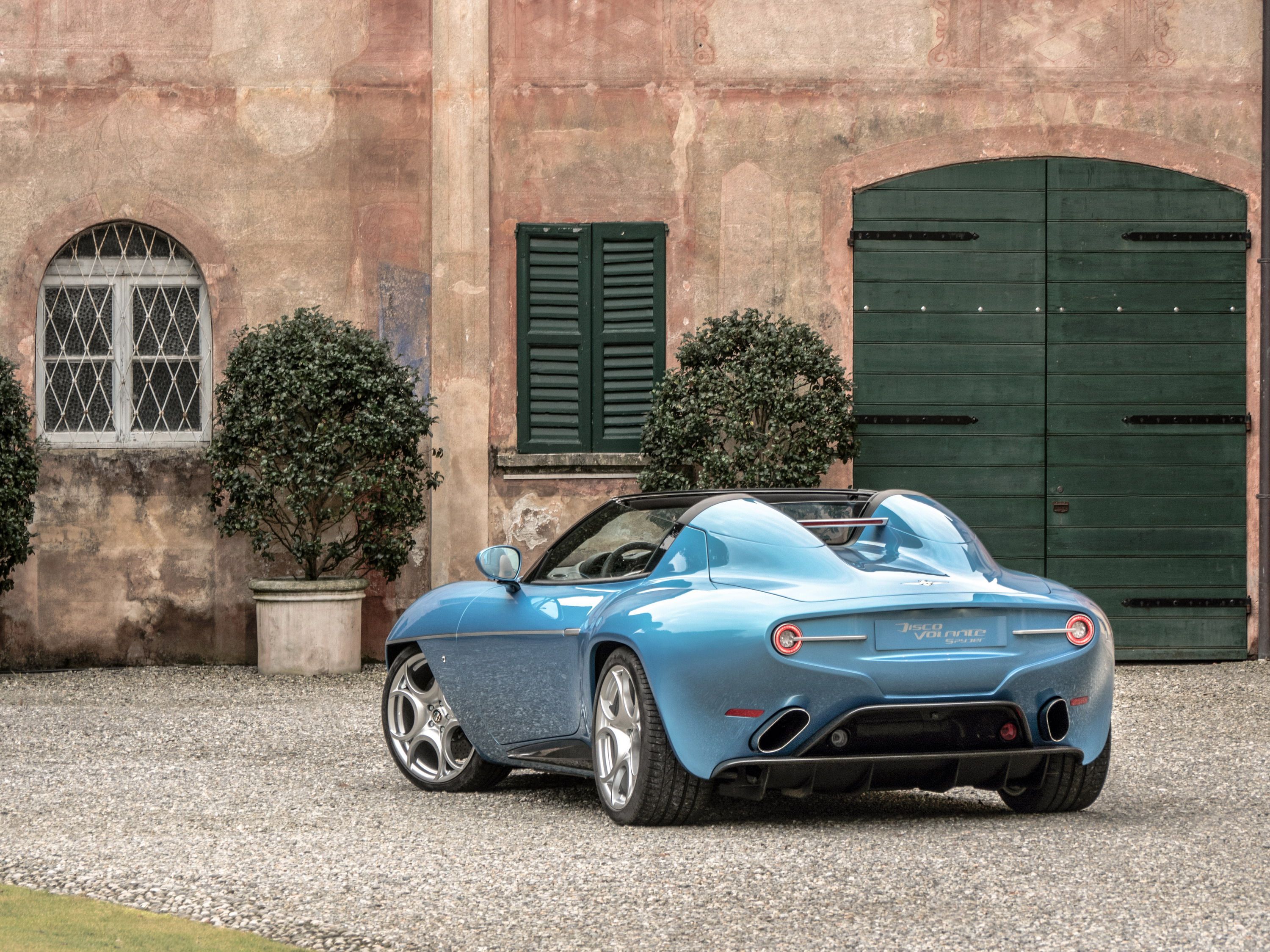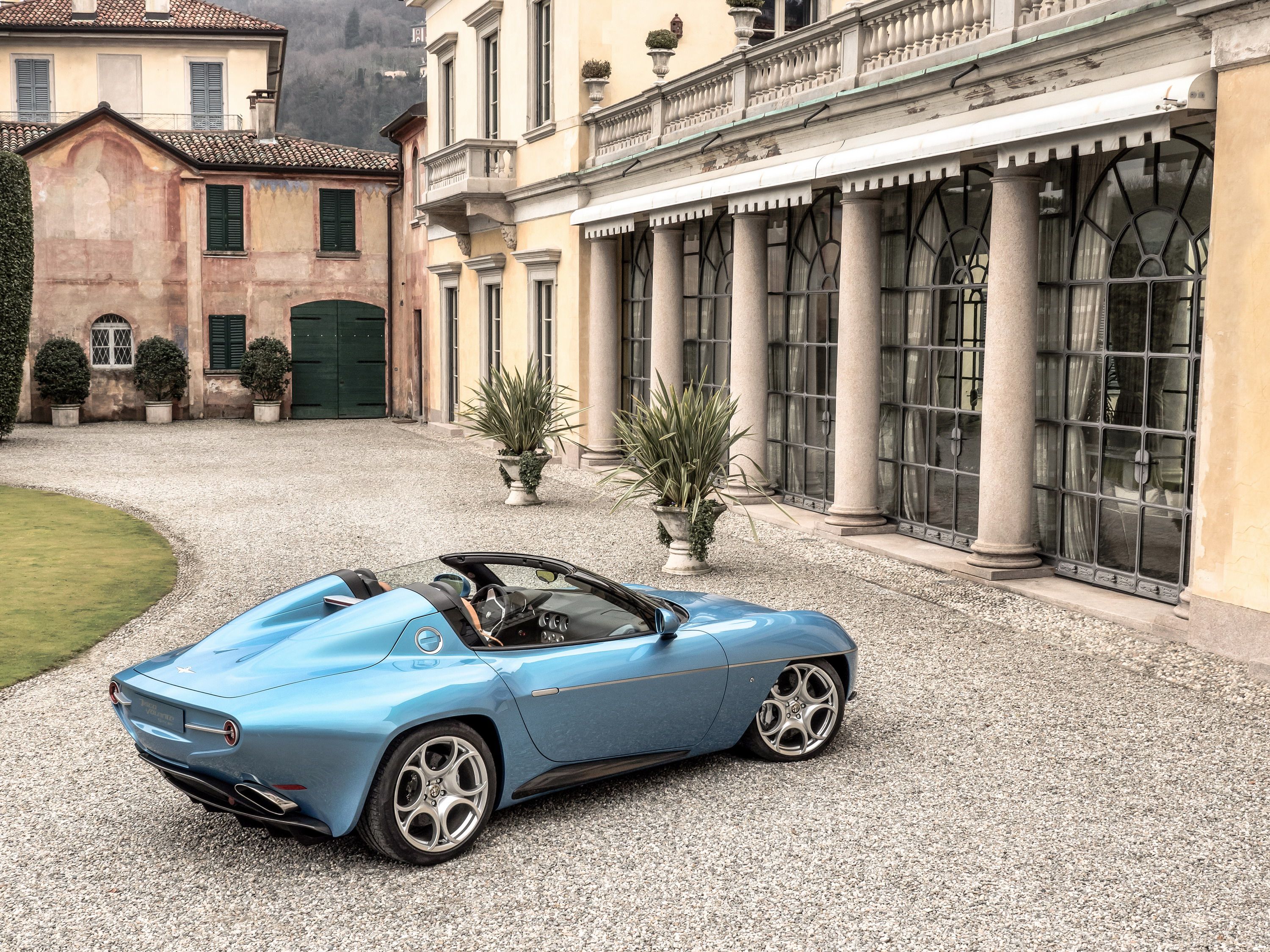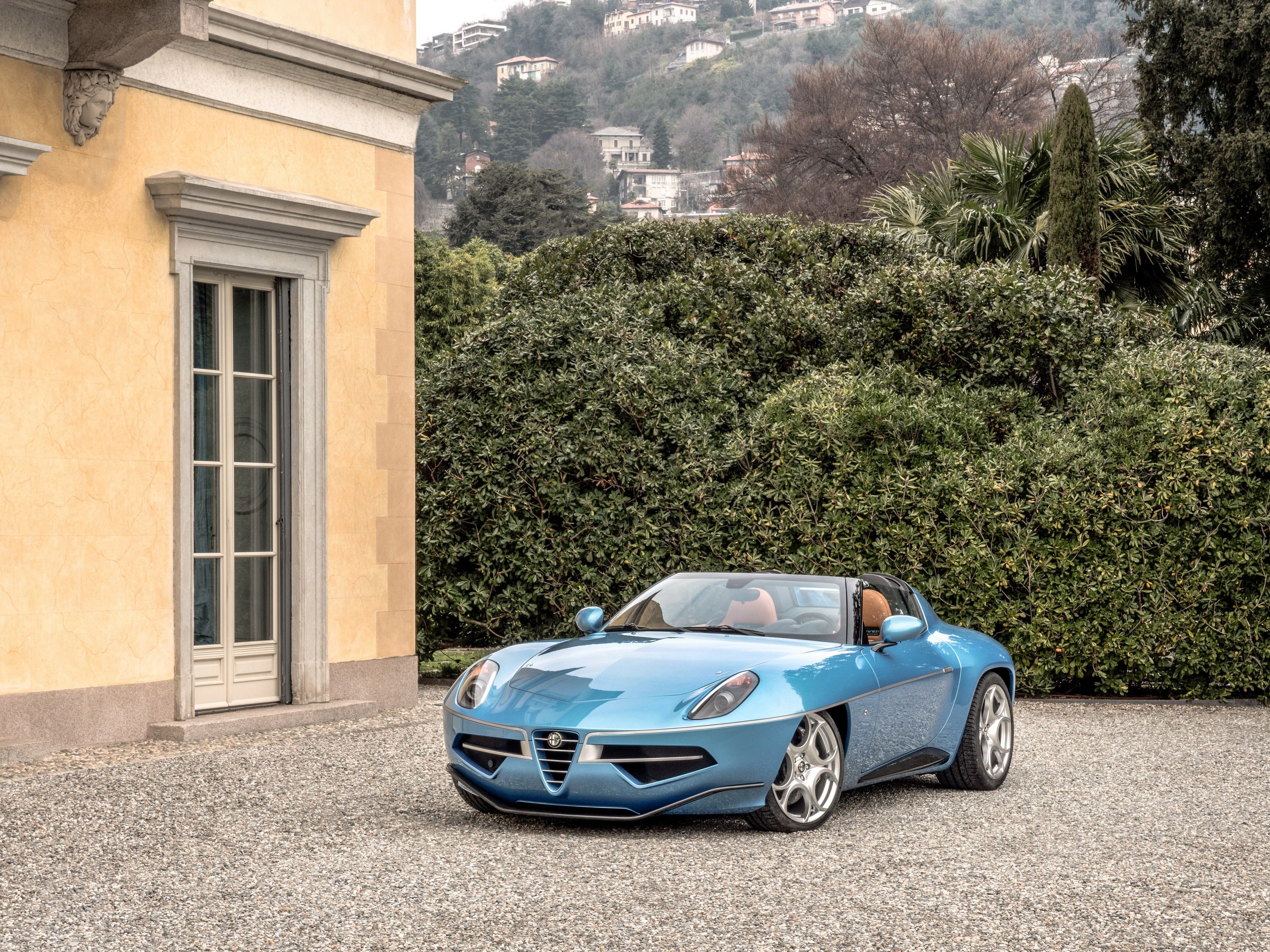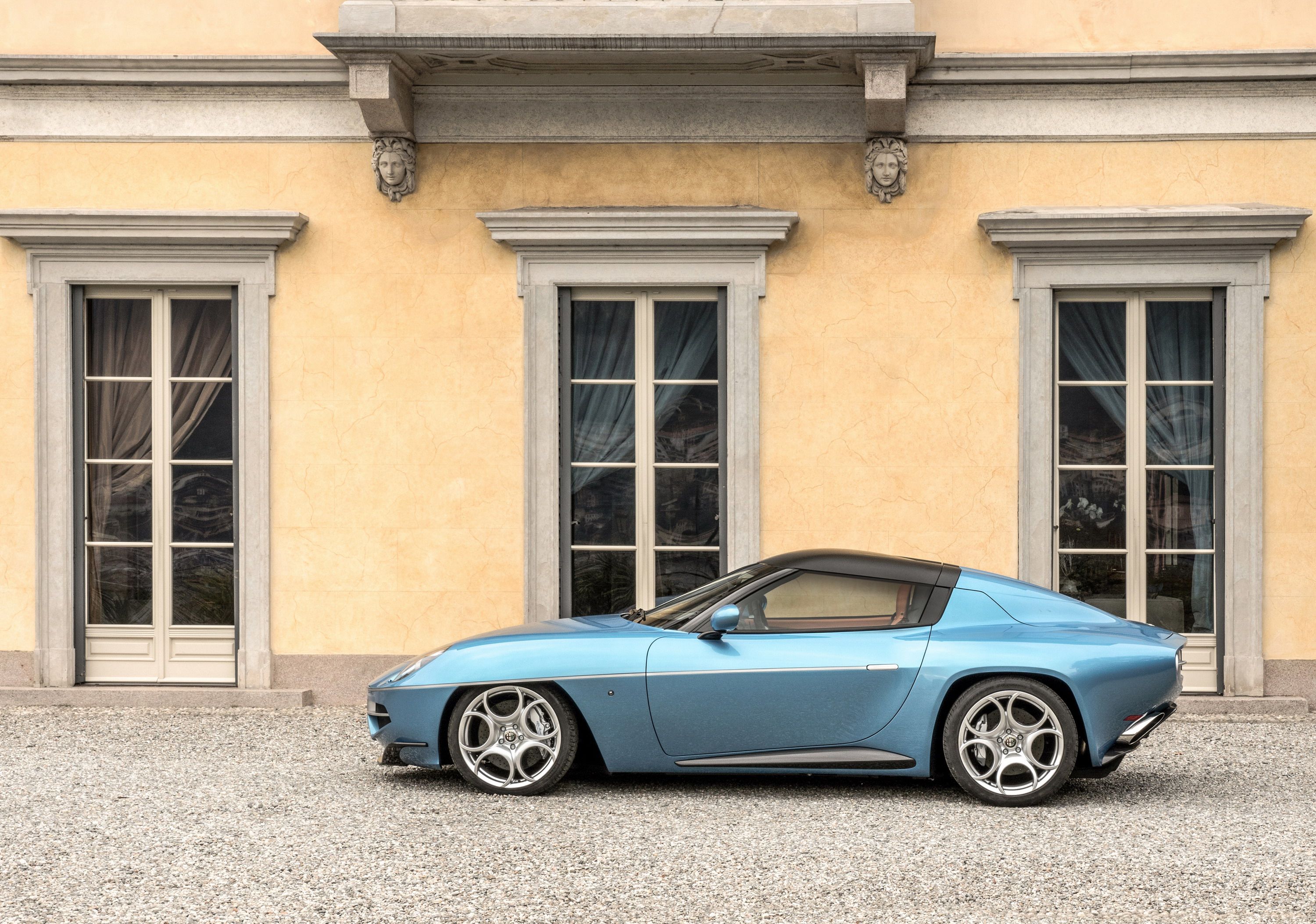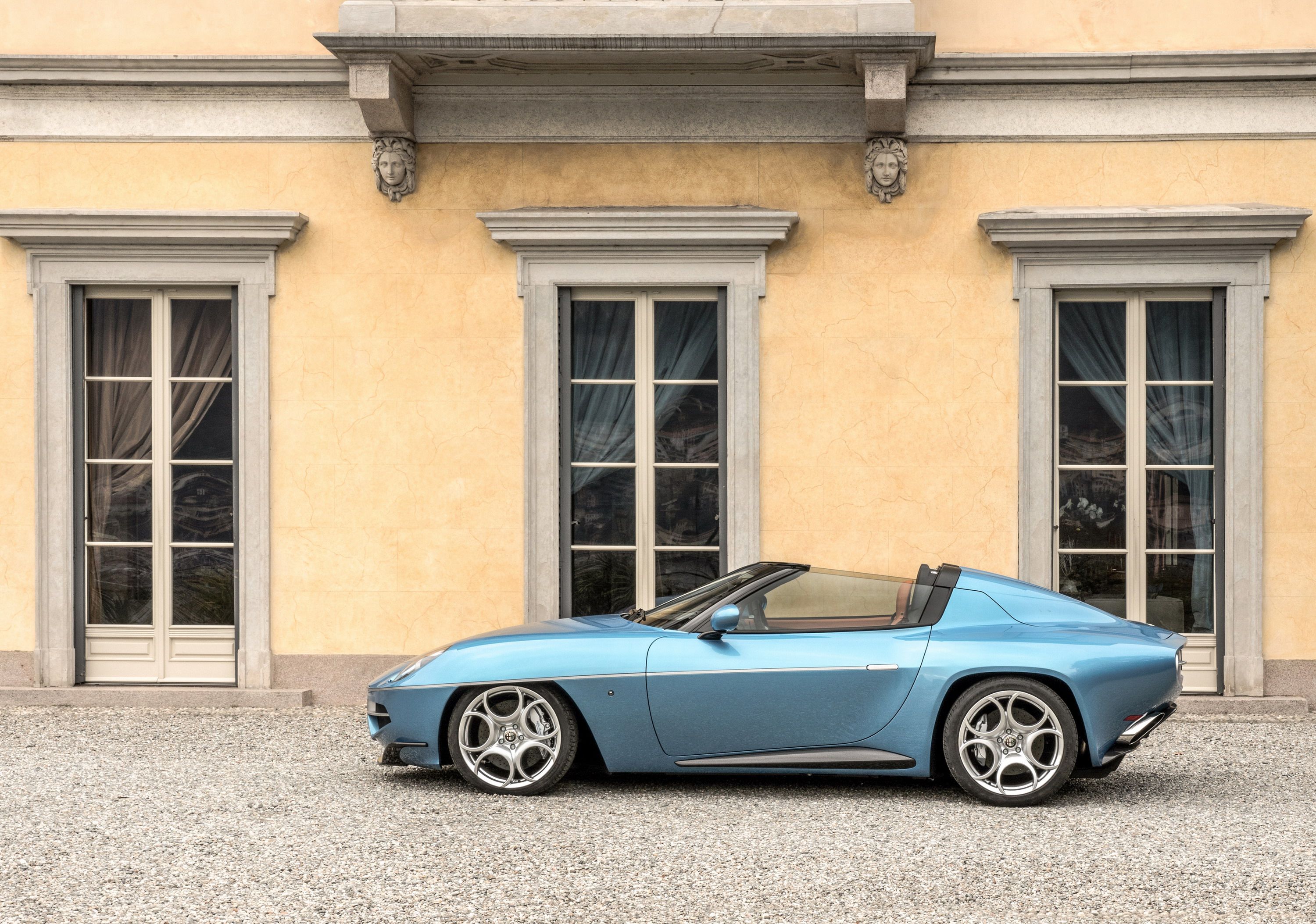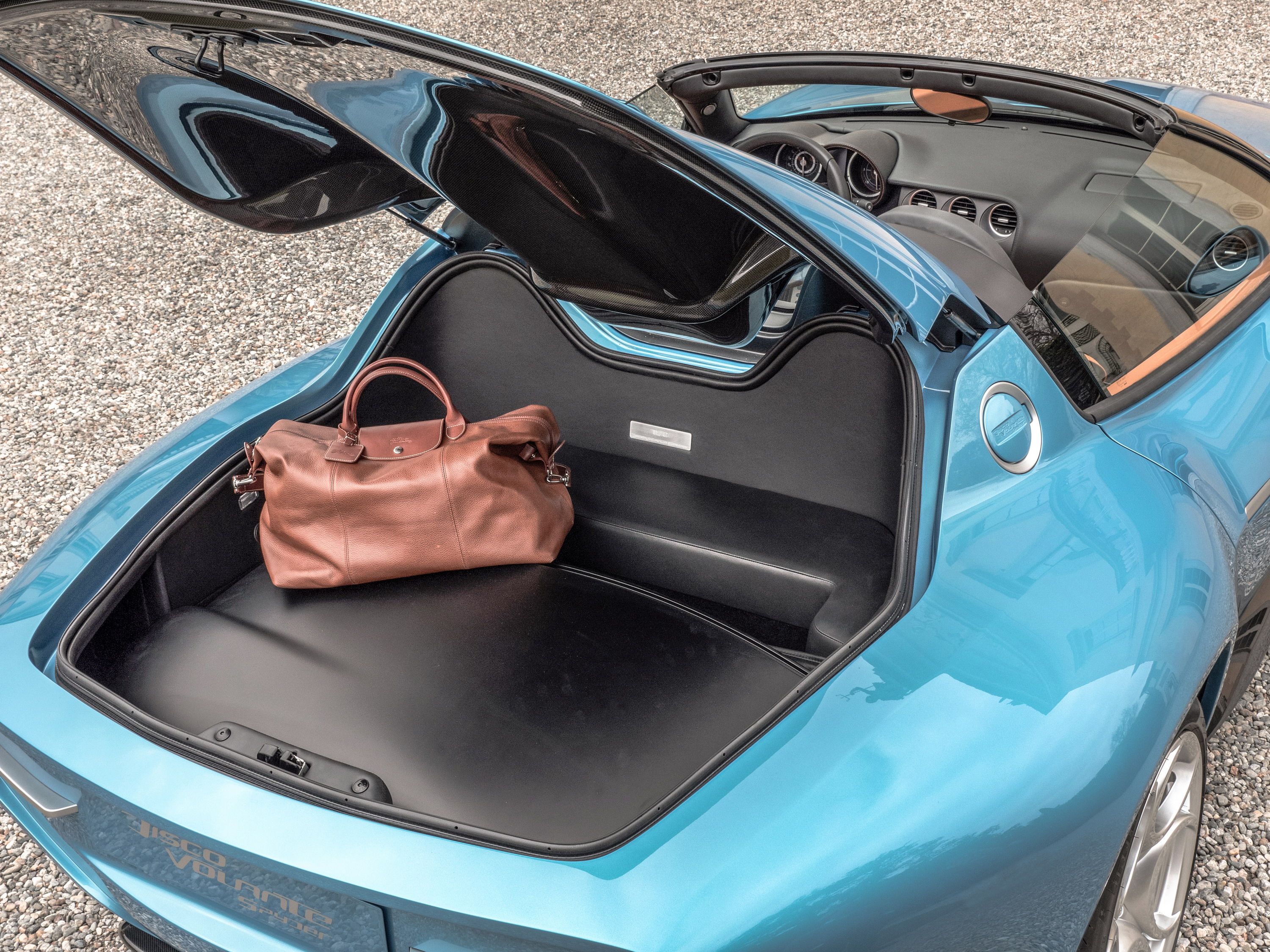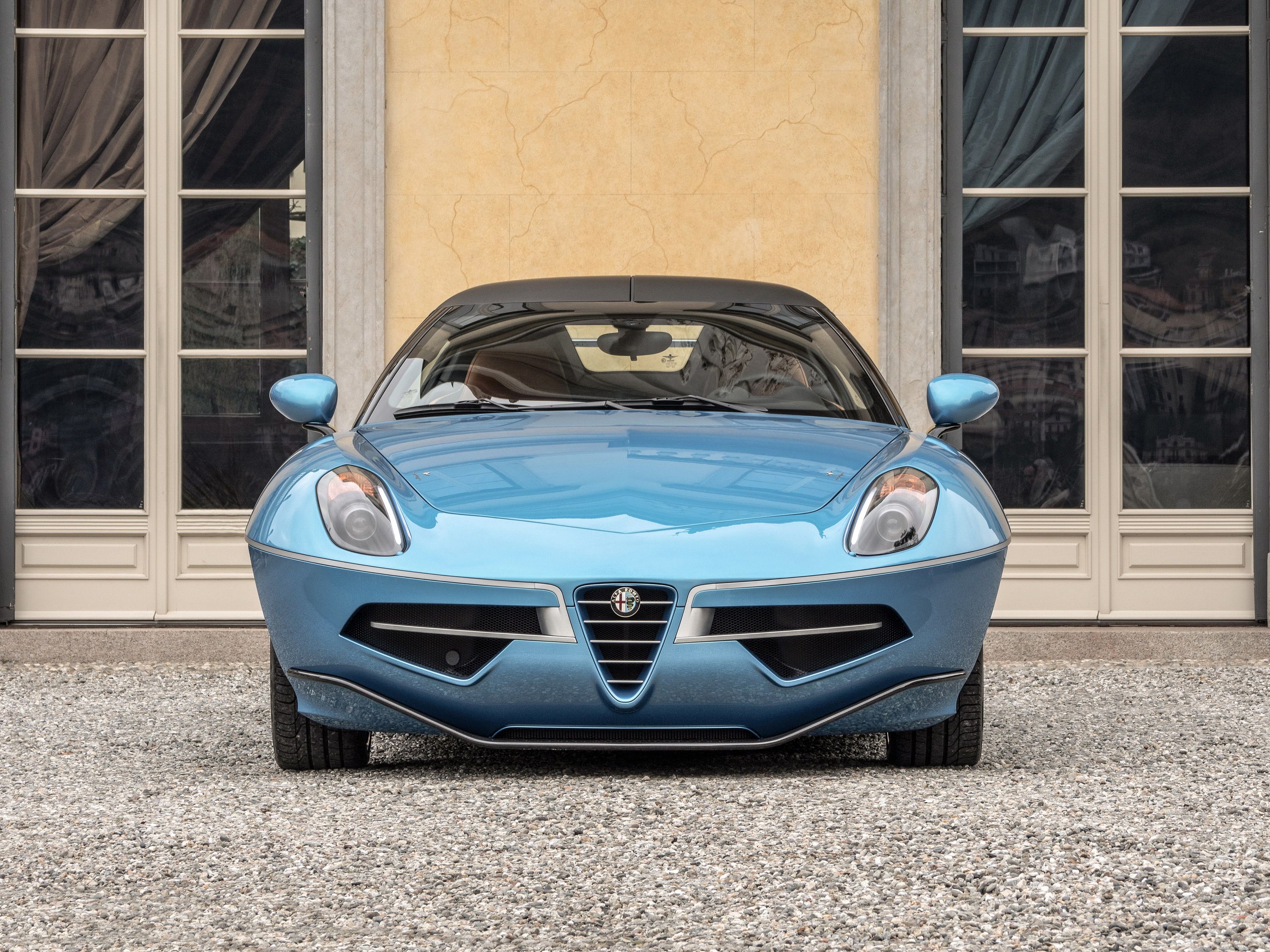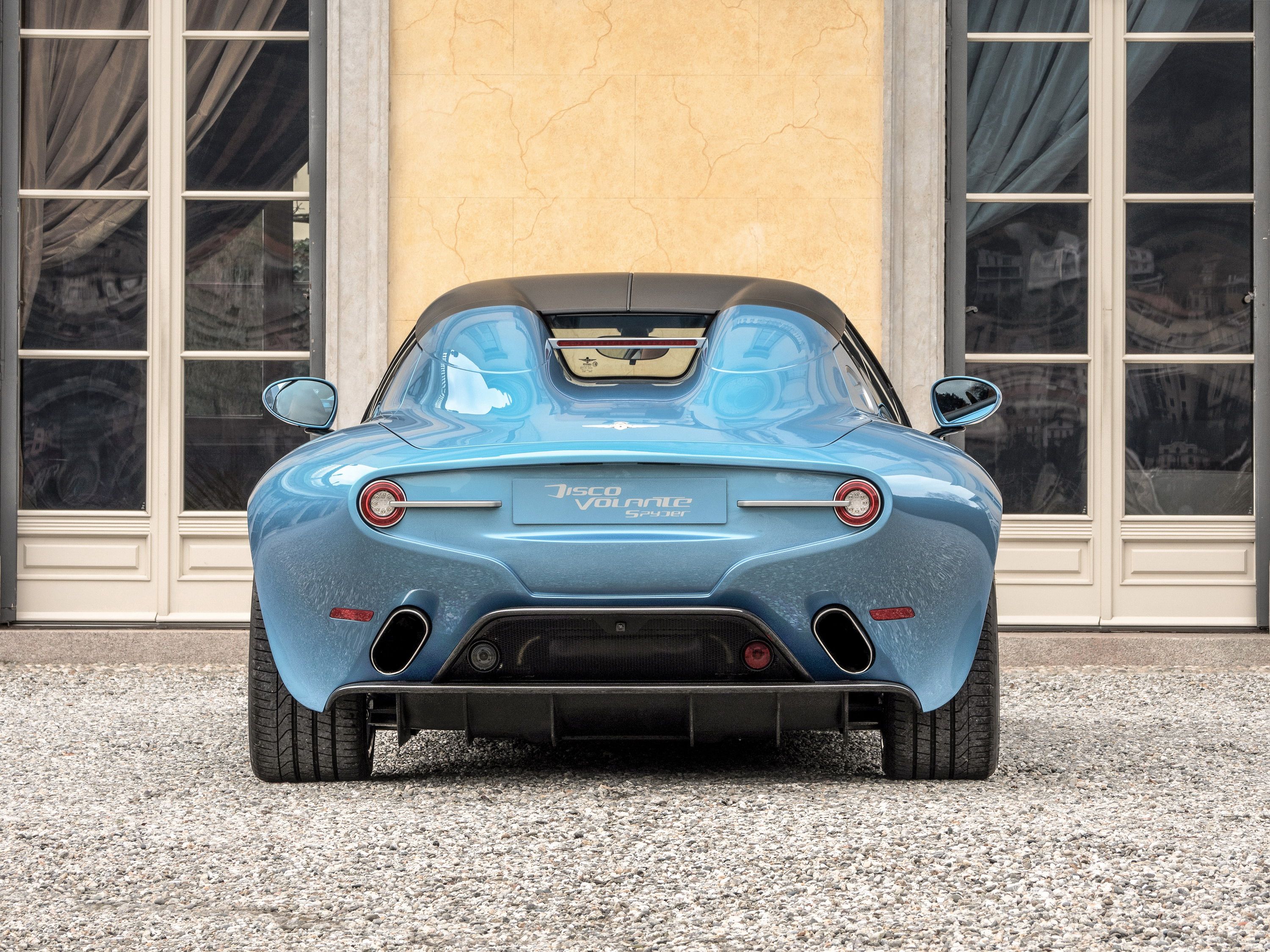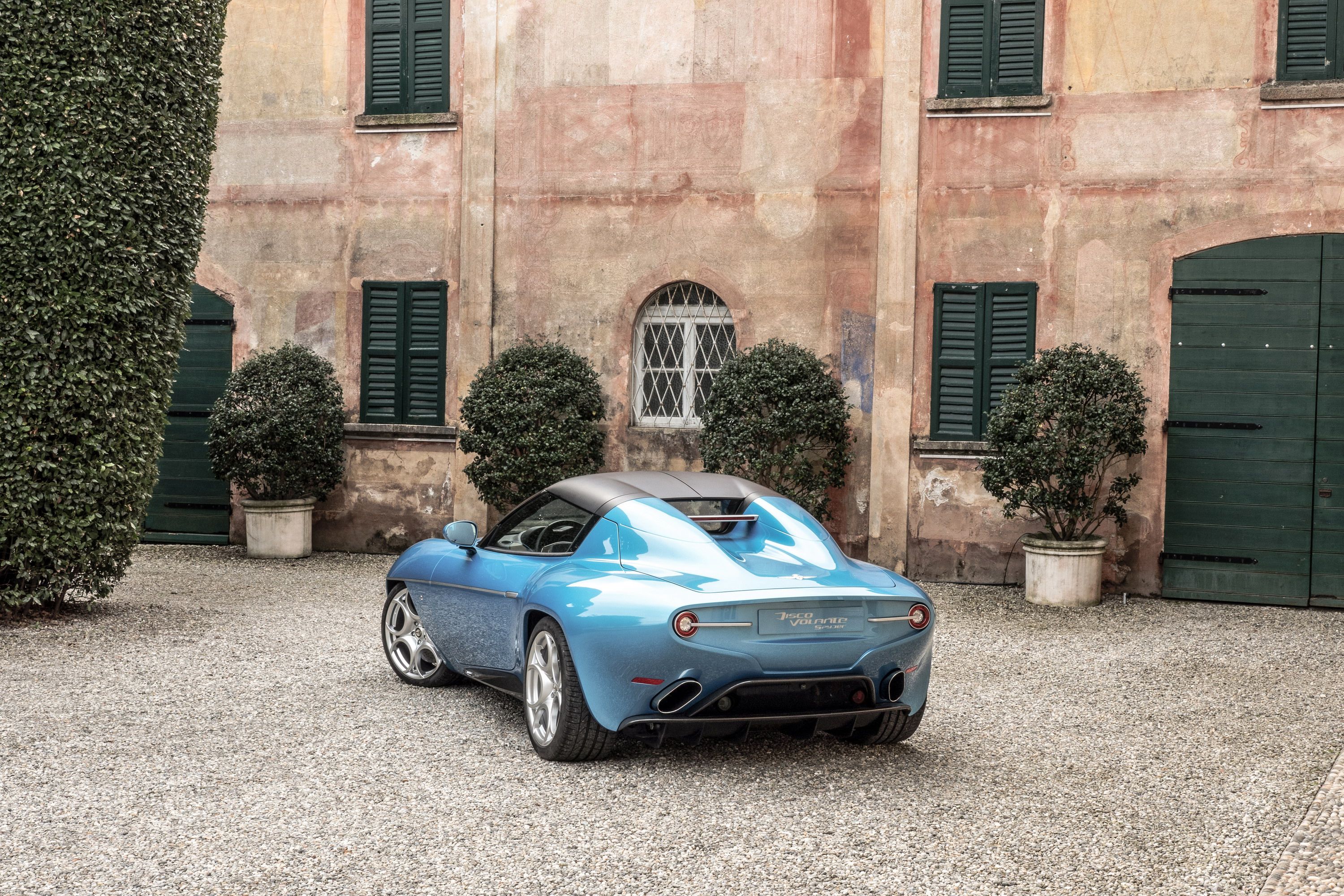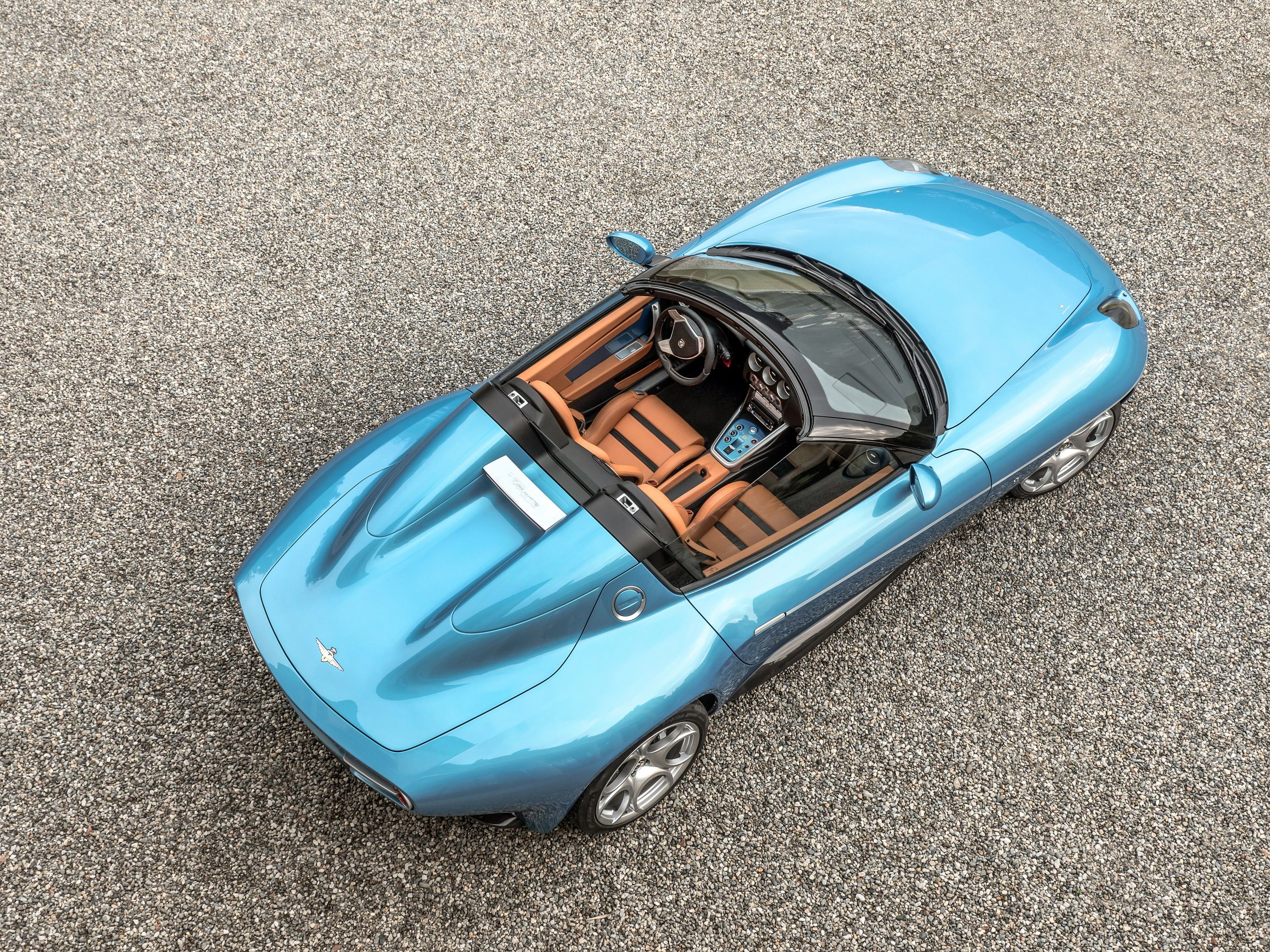At the 2012 Geneva Motor Show,->ke228 Touring Superleggera->ke4628 unveiled the Disco Volante, a concept car->ke169 that paid tribute to a series of experimental race cars built by the same firm in cooperation with Alfa Romeo->ke1386 in the early 1950s. A year later, the Disco Volante was turned into a production model using Alfa Romeo 8C->ke1431 underpinnings and a 4.7-liter V-8 engine. Three years have passed since the then and Touring Superleggera returned to Geneva with the Disco Volante Spyder -- a convertible->ke144 version of the same coach built sports car.->ke506
Created to celebrate the company's 90th anniversary, the Disco Volante Spyder is actually a more accurate interpretation of the original car, which was also conceived as a spider drop-top. The vehicle is actually more of a targa due to the flying buttresses behind the seats, but it's still an open-top that has more in common with the first Disco Volante compared to the coupe->ke141 the Italians launched in 2013.
Other than that, the Spyder is just as sexy and employs the same sporty underpinnings as its coupe sibling. Touring Superleggera has confirmed that the Disco Volante Spyder will be built in small numbers, having already received European approval and support from Alfa Romeo. Don't expect to see a Disco Volante Spyder in your neighborhood anytime soon, as only seven examples will be built. They will also be quite expensive and sold only to carefully selected customers.
Continue reading to find out more about the Touring Superleggera Disco Volante Spyder.
2016 Touring Superleggera Disco Volante Spyder
- Make: Array
- Model: 2016 Touring Superleggera Disco Volante Spyder
- Engine/Motor: V8
- Horsepower: 444
- Torque: 354
- [do not use] Vehicle Model: Array
Exterior
Not surprisingly, the Disco Volante Spyder is identical to its coupe sibling below the waist. And that's excellent news, as the modern-day Disco Volante is a bold design statement that's nearly as wild as the original car, which was revolutionary back in 1952. The front view sports the same lenticular cross-section of the original body that gives the car a dynamic look. The new windscreen is low, sharp-edged, and without a visible frame, highlighting the vehicles lightweight character.
The rear fascia is not as simple as the original, but it has a strong Italian flair attached to it. The small, round taillights, the race-inspired diffuser, and the angled exhaust pipes give it an exotic appearance. Setting it apart from the coupe are the flying buttresses on the decklid, the revised trunk lid, and the twin carbon-fiber roof that enables the Spyder to offer its passengers the proection of a true coupe. The cool thing about the Spyder is that it looks different than the standard model even with the roof in place.
The model displayed at Geneva, the first of the total seven examples to be built, was finished in Blue Ceruleo. This translates to "sky-blue" and Touring Superleggera says it was chosen because the sky is where Disco Volantes come from. Confused? Then you should know that "disco volante" is Italian for "flying saucer."
Interior
The interior of the Spyder is identical to the coupe, which means it is also based on the Alfa Romeo 8C's. The configuration is pretty much the same with bolstered sports seats, a sporty center console, and a race-inspired instrument cluster, but Touring Superleggera added fine leather, contrast stitching, and all sorts of premium details.
The Spyder also marks the brand's renewed cooperation with Connolly Bros., a company known for upholstering the benches and seats of the Houses of Lords and Commons, the Concorde, the British Library, and the Dorchester and Ritz hotels back in the day.
What makes Connolly leather special is the manufacturing process, which gives the hide a sort of aroma. CEO Jonathan Connolly explains: "So when the customer smelt the aroma of the first Disco Volante Spyder he said it was fantastic, because it was like the old leather. What we have made for Touring is a hybrid leather, a combination of modern technology with the old process inside."
Definitely something you don't get with a Ferrari or a Lamborghini.
Drivetrain
Under the hood, the Disco Volante Spyder has the Alfa Romeo 8C's lightweight, 4.7-liter V-8. The engine is actually a modified version of the F136Y design co-developed by Ferrari and Maserati and used in various versions of the GranTurismo. Output is identical to the Disco Volante coupe and Alfa Romeo 8C at 444 horsepower (450 PS) and 354 pound-feet of torque. All that oomph travels to the wheels through a rear-mounted, six-speed sequential automatic and pushes the Spyder to 62 mph in 4.5 seconds and to a top speed of 181 mph.
The Disco Volante also employs a limited-slip differential and a carbon-ceramic braking system with ventilated discs, which pretty much makes it suitable for long weekends at the track. Should owners risk taking such a rare and expensive vehicle racing, that is!
Prices
Pricing information is only available on demand, but it's safe to assume that each Disco Volante Spyder will cost in excess of $500,000 before options. It's very likely that all seven examples have been already sold to collectors.
Competition
Ferrari Sergio by Pininfarina
Italy is the birthplace of many iconic coachbuilders, but most of them are now either fighting to escape bankruptcy or designing concept cars only. Pininfarina is still in business and the Sergio, which was unveiled in 2014, is proof that it can still come up with exquisite designs. Named in honor of company founder Sergio Pininfarina and created to celebrate the 60th anniversary of the brand's collaboration with Ferrari, the Sergio is heavily based on the 458 Spider inside and under the hood, but feature a bespoke exterior with a radically restyled nose. Power is provided by the same 596-horsepower 4.5-liter V-8 in the Ferrari and enables the Sergio to hit 60 mph from a standing start in three second. Pininfarina built only six units and sold them for $3 million a pop. The Disco Volante Spyder doesn't seem that expensive now, does it?
Find out more about the Ferrari Sergio here.
Conclusion
If you're in love with 1950s designs, you simply cannot ignore the Disco Volante Spyder. Sure, it sports numerous modern features and solutions and it is based on a sports car that has been discontinued in 2010, but the Spyder is one of those inspired neo-retro designs that has become quite rare nowadays. These type of cars are what keep me excited in an era when automotive designs have become rather dull and I do hope that Touring Superleggera will revive more classic shapes in the 21st century. There's only one frustrating things about the Spyder. It's freaking rare and painfully expensive.

